
There's nothing better than curling up on a chilly Winter night with Steve and the puppies, a good movie (like Bohemian Rhapsody - AMAZING!) and a nice bottle of red wine. And if you're also a fan of indulging in delicious, full-bodied red wines this time of year, you won't want to miss my timely podcast interview with Christian Palmaz, CEO of Palmaz Vineyards, which is home to some of my favorite Napa Valley Cabernet Sauvignons.
Born in San Antonio, Texas to Argentine parents, Christian's family's has had a fascinating journey in the wine world, which began with his father's groundbreaking invention of the Palmaz coronary heart stent in the 1990's. Since then, two generations of the Palmaz family have sought to bring this familial spirit of innovation and invention to the ancient art of making wine. Their background in the sciences, passion for living life to the fullest and years of backbreaking work have resulted in a unique winery situated inside an 18-story cave that combines cutting-edge technology with a respect for winemaking tradition.
Simply click the link above to listen to the interview or click here to be taken to iTunes where you can also subscribe to The Wine Atelier podcast and leave a review, if you are so inclined.
1.) For more information on Tannins, please click here.
2.) The beautiful Palmaz book set: Book 1: "Tradition, Terroir & Technology," Written by Christian Gastón Palmaz & Nick Kolakowski; Book 2: "At the Table and Around the Fire," Written by Florencia Palmaz with Food Editor Kate Knapp
3.) Amalia and Florencia Palmaz's Goodheart brand
4.) My blog post on Red Wine 101
– To share your thoughts on this episode, please do so in the Comments section below.
– To spread the word about The Wine Atelier podcast, please share this show on Twitter, Facebook and/or Pinterest.
– If you enjoyed the show, please leave a review on iTunes where you can also subscribe so you won’t miss a thing!
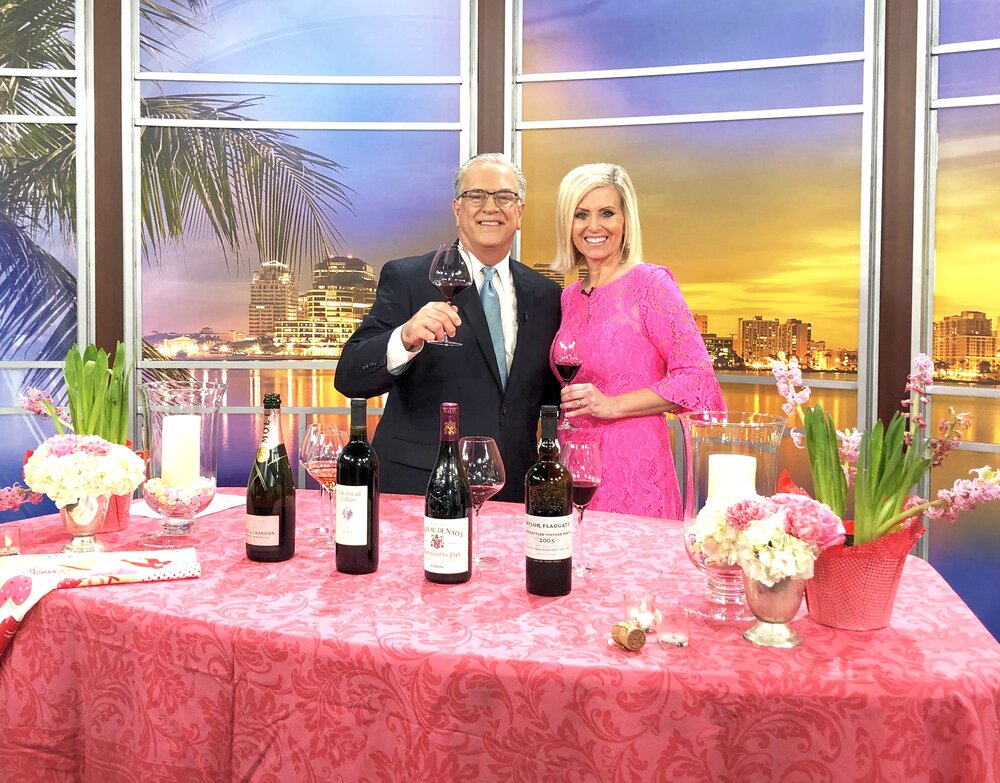
If you're looking for the perfect wines to set the mood for l'amour this Valentine's Day, check out my latest appearance on WPTV featuring my favorite Romantic Red Wines for Valentine's Day. In addition to the wine selections, I also explain the two reasons why red wines posses more aphrodisiac qualities than white wines and are naturally better for setting the mood for love.
The fabulous John Favole also asks some great questions about food pairings for these delicious wines so please check out the video below as well as the show notes below the video for all the details (and links to the food pairing recipes!).
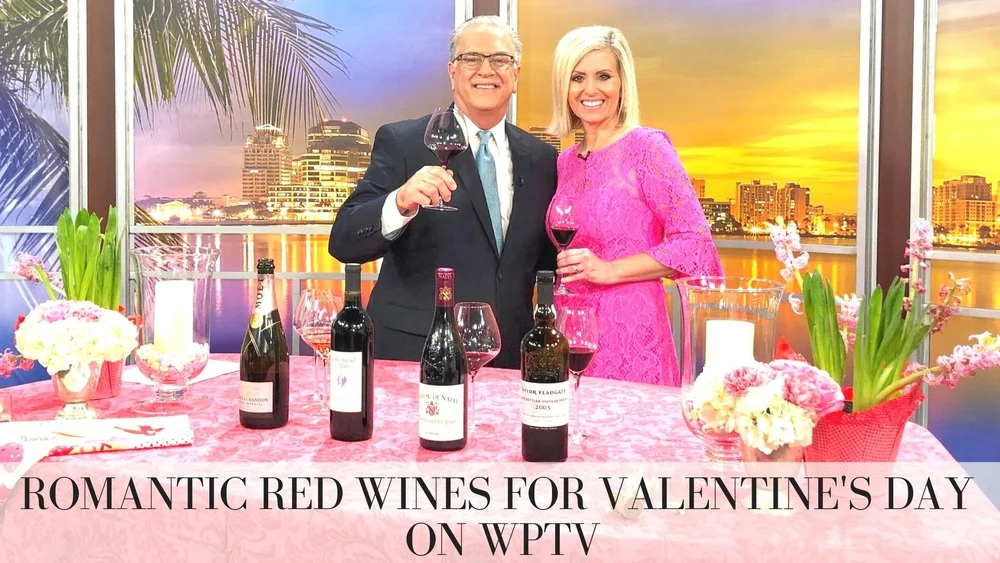
I hope you find my Romantic Red Wines for Valentine's Day recommendations helpful! Please see below for a list of all the wines featured in this episode as well as links to recipes.
This year's “Living Ties” Limited Edition bottle features beautiful black ties that represent the ties that bind together soulmates, family + friendships.
Made predominantly from the Pinot Noir grape, this beautiful pink Champagne gets its glorious color from the addition of 10% still red wine.
Enjoy this wine in a white wine glass (not a flute!) to fully appreciate the delightful aromas and flavors of the wine!
This delightful rosé Champagne has enticing notes of strawberries, raspberries, red currants, peach and a subtle note of spice and finished with a delightful crisp, dry finish!
Merlot is the perfect grape for Valentine's Day! It’s all about luscious, voluptuous ripe dark fruit like black cherry, blackberry and plum with an opulent, full-body.
Originally from France's Bordeaux wine region, Merlot gets hedonistically ripe in the warmer climates of California's Napa Valley.
This wine from the well-known Cakebread Cellars is a blend of 95% Merlot and 5% Cabernet Franc. It displays fragrant aromas of ripe black cherry, black currant and violet. It has rich, concentrated flavors of ripe blackberry, plum, black cherry and spice that fill the lush palate, framed by fine-grained tannins, culminating in a long finish.
Chateauneuf-du-pape produces delicious red wines from France’s Southern Rhone Valley. These wines are red blends that are predominantly based on the Grenache, Syrah and Mourvedre grapes although 13 grapes can legally be used.
This elegant, full-bodied stunner is crafted primarily from the estate's Old Vine Grenache with a dollop of Syrah, Mourvedre, Counoise and Vacarese which combine to create a rich, luxurious red wine.
This wine is full-bodied and velvety, with a lovely minerality and notes of dark cherry fruit, vanilla and sandalwood. Layers of spices including cinnamon, clove, licorice and allspice add depth of flavor and interest to the silky finish.
This is the most luscious of our featured wines and the most perfect for pairing with chocolate!
Port is a fortified wine (read this for more info) which means the wine has a higher alcohol content (approx 20%) and it is also lusciously sweet!
Unlike vintage Ports, Late Bottled Vintage Ports are bottled after 4-6 years in wood, giving them some of the characteristics of vintage Port but with less time required for bottle aging.
This wine has powerful, mouth-filling notes of dark cherry, ripe black fruit and chocolate with beautiful depth and complexity and a lengthy, spice-tinged finish.
Looking for romantic Valentine's Day dinner recipes for two? Check out these Fabulous Food Pairings:
This recipe for succulent Mustard Roasted Fish would be delicious paired with the Moët & Chandon Rosé Impérial Champagne!
Steak au Poivre à Deux with Roasted Rosemary Garlic Potatoes is perfect for pairing with the Cakebread Cellars Merlot or the Chateau de Nalys Chateauneuf-du-Pape!
Hoffman's DELIGHTFUL chocolates are perfect for pairing with the luscious Taylor Fladgate Port. For more detailed information on which chocolates pair best, please check out this video - OH the DECADENCE!!!
I hope you enjoy these Romantic Red Wines for Valentine's Day and I'd love to hear which wines are your favorites. If you enjoyed this video, please click here subscribe to my YouTube channel and/or click here to add your name to my weekly newsletter list. And most importantly, I hope you have a very Happy Valentine's Day!
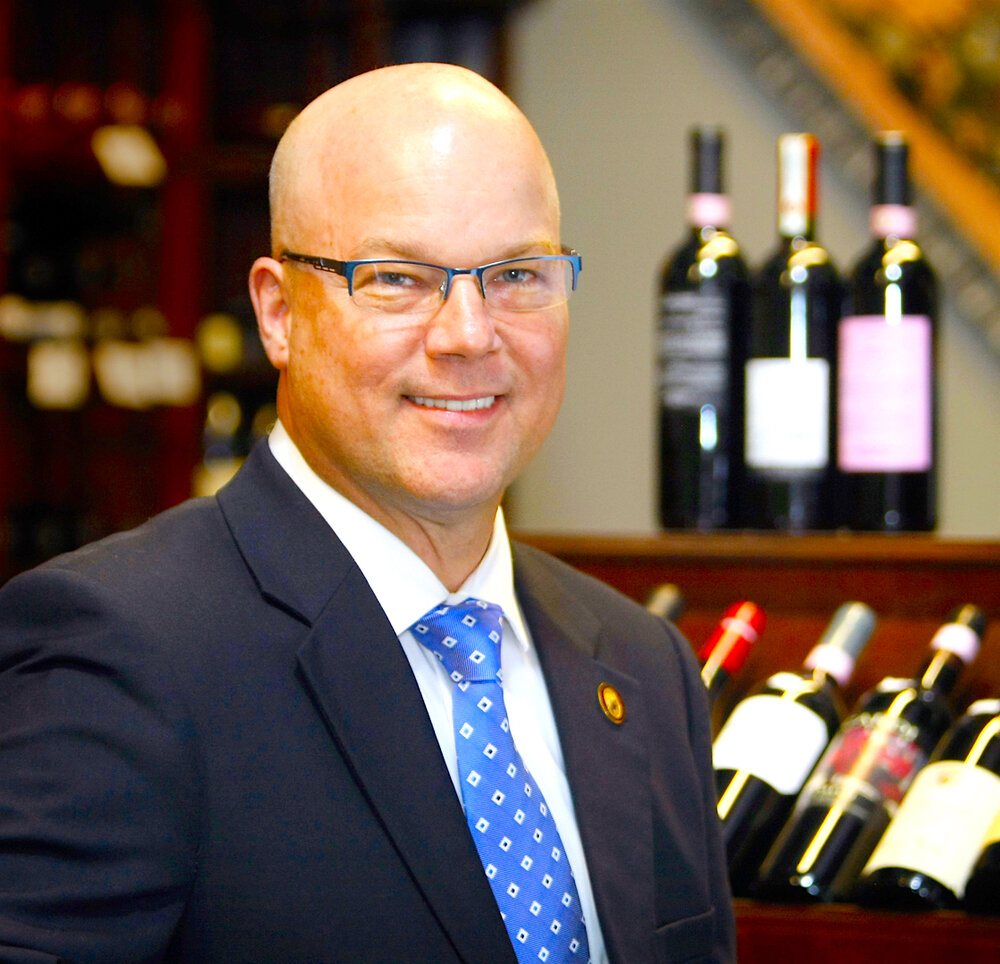
I can't think of a better way to kick off the New Year than talking 2019 Wine Trends with Master Sommelier and Master of Wine, Eric Hemer. Eric is one of only four people on the planet to have ever achieved both of these credentials. He's also Senior Vice President and Corporate Director of Wine Education for Southern Glazer’s Wine & Spirits of America. Talk about someone who has their pulse on what's going on in the world of wine!
But it's been a long road to get to this point in his career, and he'll be the first to tell you that.
Hemer has been with Southern Glazer’s for thirty years and started as a Fine Wine Consultant here in the Palm Beaches. He worked his way up, attaining his credentials along the way beginning with his Certified Wine Educator credential in 1999. After that, he achieved his Master Sommelier certification in 2003, and then his Master of Wine in 2013.
Currently, Hemer is actively involved as a lecturer, examiner and instructor with the Court of Master Sommeliers, the Institute of Masters of Wine, the Wine and Spirits Education Trust and the Society of Wine Educators. On this episode of the Wine Atelier podcast, he shares his predictions for 2019 Wine Trends including the future of rosé wine, the hottest up and coming region for sparkling wine, the type of red wine that's gaining in popularity and much, much more!
– To share your thoughts on this episode, please do so in the Comments section below.
– To spread the word about The Wine Atelier podcast, please share this show on Twitter, Facebook and/or Pinterest.
– If you enjoyed the show, please leave a review on iTunes where you can also subscribe so you won’t miss a thing!
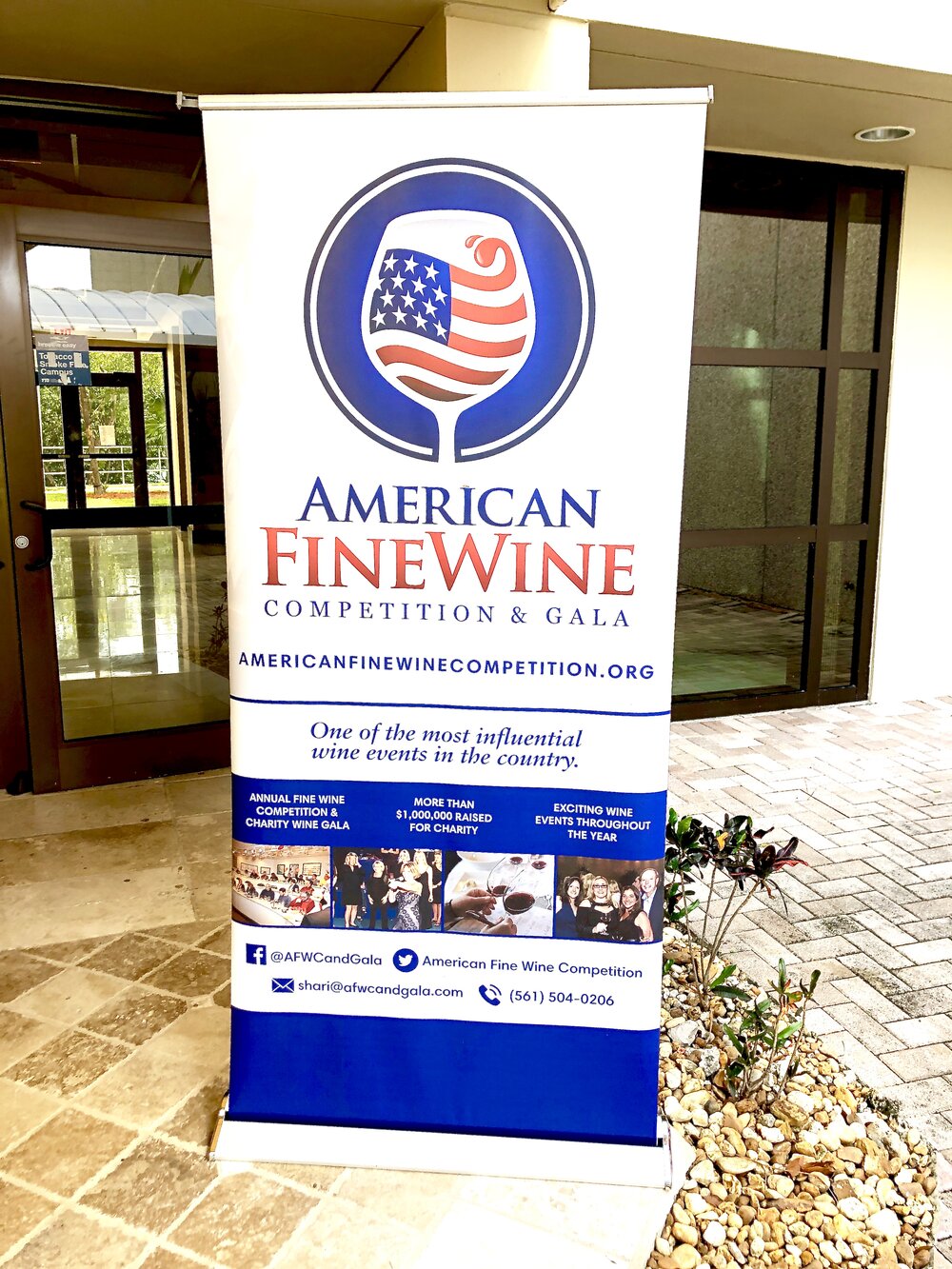
My fellow wine lover, it is with great pleasure that I reveal the results of the 12th Annual American Fine Wine Competition! As many of you know (especially if you're on Facebook or Instagram), the judging process took place last month at Florida International University’s Chaplin School of Hospitality.
And after two solid days of sipping, swishing and (mostly!) spitting we collectively judged over 700 wines from around country, thereby earning our indelibly purple-etched teeth. We tasted everything from Michigan Riesling to California Tempranillo hailing from both well established and up and coming wine regions. Given the exciting diversity of the entries, it’s always fascinating to learn the winners.

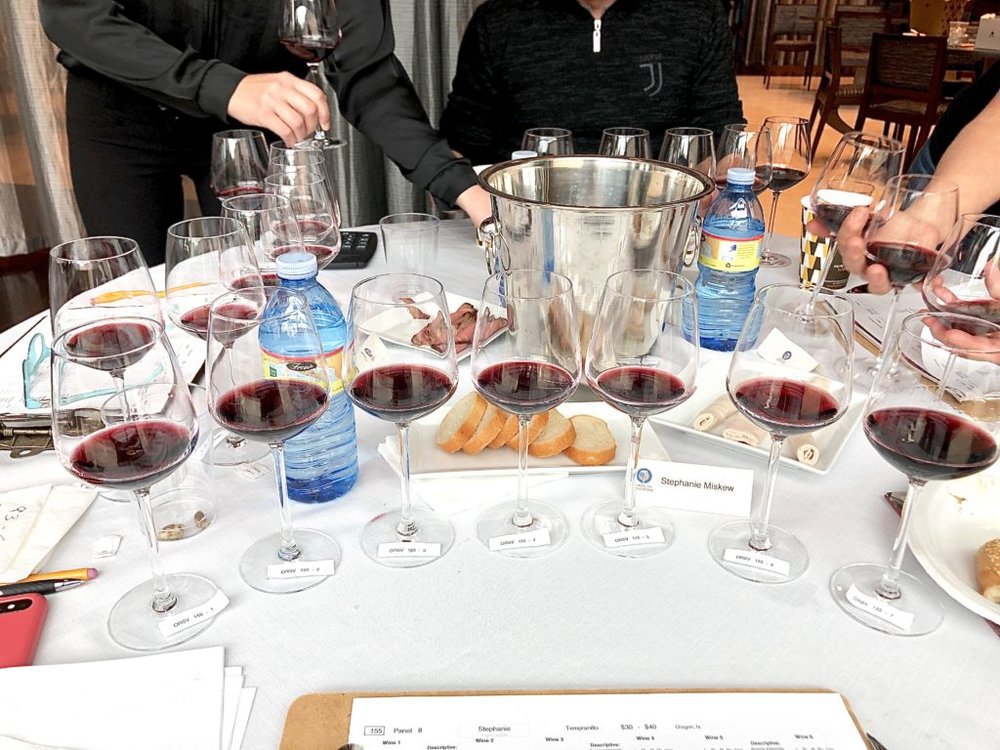
And in his third year as Chief Judge and Judging Coordinator of the AFWC, Greg Miseyko did a wonderful job presiding over the competition. Greg assumed the esteemed duties from competition Co-Founder Monty Preiser who still participates as a judge. And once again, Co-Founder and President, Shari Gherman executed the judges' tasting flawlessly. I continue to be amazed at how she choreographs the numerous flights of wines and their distribution to over 30 judges during the lengthy judging process - GO, Shari!
So without further ado, here are the results of the Best of Show and Best of Class categories for the 14th Annual American Fine Wine Competition. Please scroll all the way to the bottom for the link to the complete results:

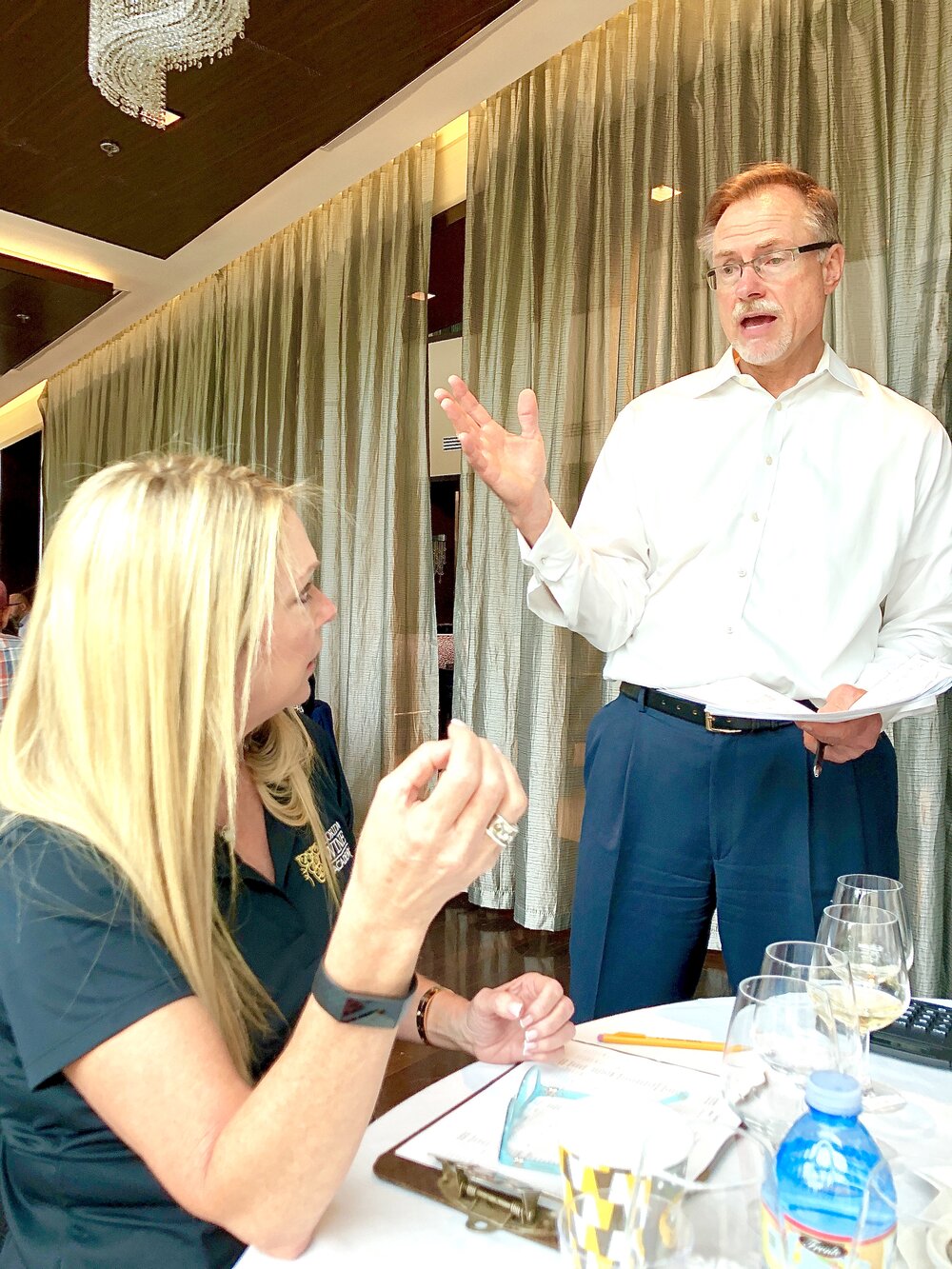
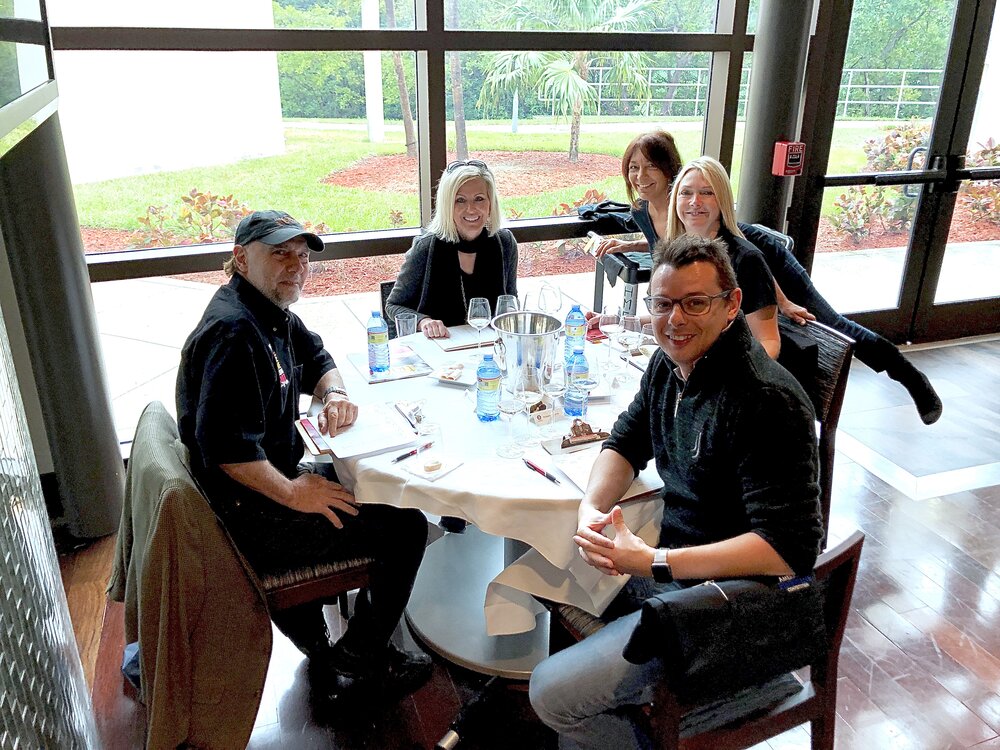
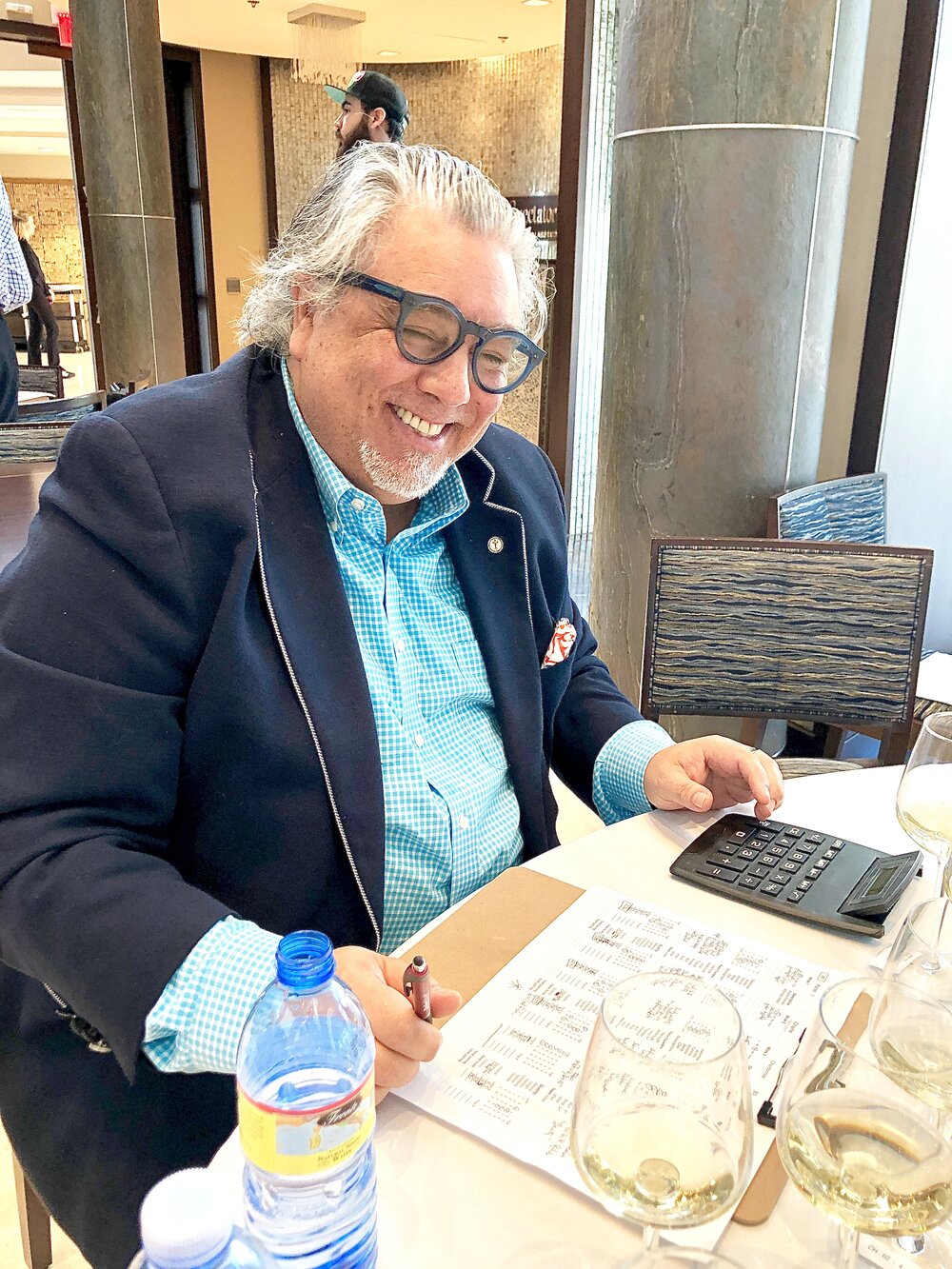
Best of Show Red Wine: Chase Cellars Stags Leap District Cabernet Sauvignon, Napa Valley, California, 2016 ($125)
Best of Show White Wine: Black Star Farms Arcturos Semi-Dry Riesling, Leelanau Peninsula, Michigan, 2016 ($14)
Best of Show Sparkling: Glenora Wine Cellars Brut, Finger Lakes, New York, 2013 ($30)
Best of Show Port: St. Amant Winery Lot #11 Amador County, Lodi, California, NV ($35)
Best of Class Cabernet Franc: Ancient Oak Cellars Alcaeus Cabernet Franc Sonoma Mountain, Sonoma, California, 2014 ($75)
Best of Class Bordeaux Blend: B Cellars Vineyards and Winery Blend 27 Napa Valley, Napa, California, 2016 ($87)
Best of Class Merlot: Raymond Vineyards Reserve Napa Valley Merlot, Napa, California, 2016 ($30)
Best of Class Petite Sirah: Ballentine Vineyards Pocai Vineyard Petite Sirah Calistoga, Napa Valley, California, 2016 ($45)
Best of Class Pinot Noir: Bee Hunter Wine Oppenlander Vineyard Pinot Noir, Mendocino, California, 2014 ($48)
Best of Class Syrah: Klinker Brick Winery Farrah Syrah, Lodi, California, 2015 ($20)
Best of Class Zinfandel: Michael David Winery Lust Zinfandel, Lodi, California, 2015 ($59)
Best of Class Other Red: V. Sattui Winery Entanglement GSM Blend, Napa Valley, California, 2016 ($40)
Best of Class Other White: Acquiesce Winery Belle Blanc Lodi Mokelumne River, Lodi, California, 2017 ($32)
Best of Class Sauvignon Blanc: Reustle Prayer Rock Vineyards Sauvignon Blanc, Umpqua Valley, Oregon, 2017 ($23)
Best of Class Chardonnay: Husic Vineyards Dutton Ranch Sonoma Coast Chardonnay, Sonoma, California, 2016 ($50)
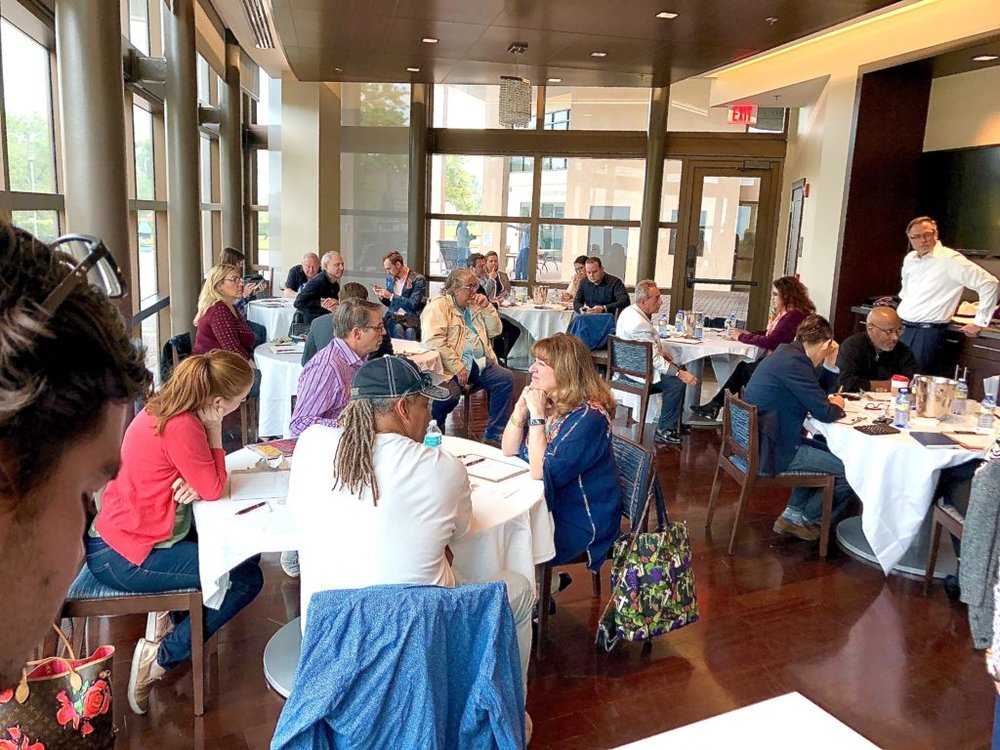
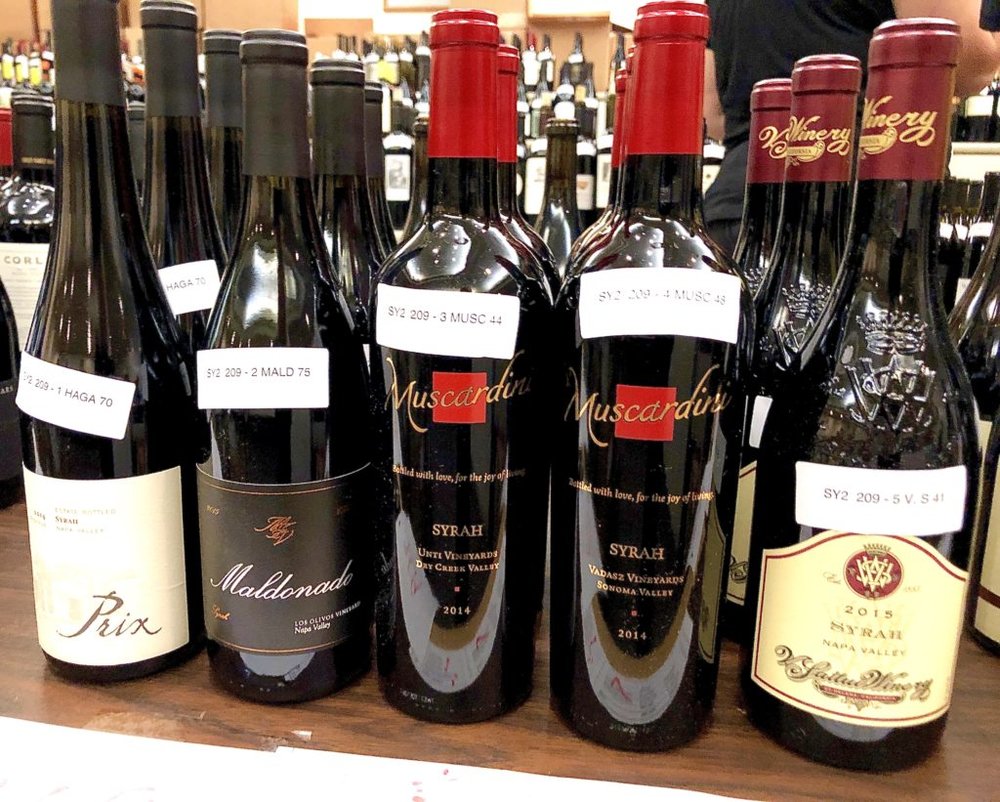
To view the complete list of results from the 12th Annual American Fine Wine Competition, please click here. Also, for more information on upcoming AFWC wine events, including the AFWC Gala, be sure to check out their calendar by clicking here.
Also, if you have any questions about any of the wines listed here or you'd like to share your thoughts, please feel free to message me in the comments sections below. To see results from previous years of the American Fine Wine Competition, simply click here.
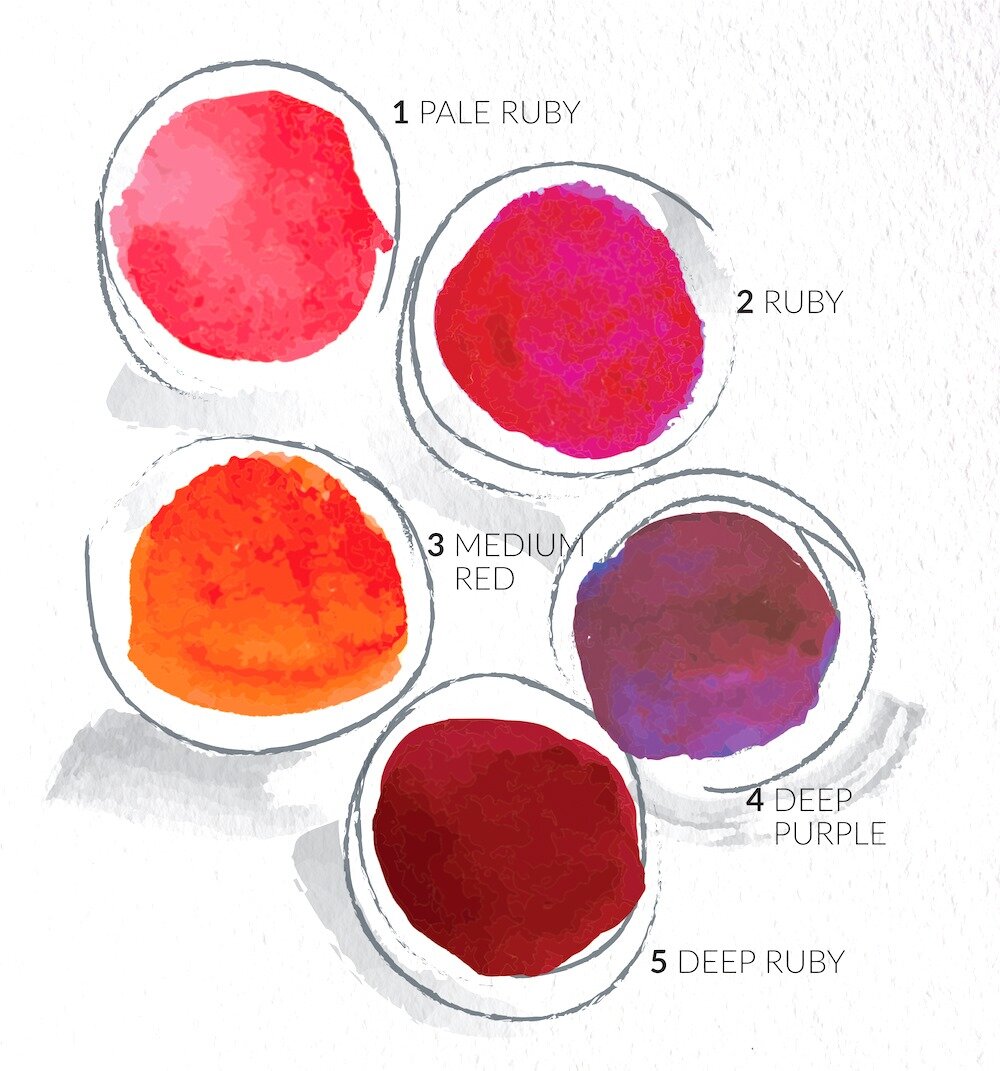
Despite what those wine snobs like to believe, no one can know ALL there is to know about wine. But that’s part of the beauty of this expansive topic! And if you’re new to wine, I appreciate how daunting it can be knowing exactly where to “jump in.” So if you find yourself in this vinous quandary, I'm happy to help with the perfect starting point - my two companion blog posts: White Wine 101 which I posted last week and this week’s post, Red Wine 101!
Beginning with the basics is always a great way to start and after reading these two posts you'll know:
The important differences between white and red wine production
The most popular grape varieties you'll encounter on wine lists and at your local wine or grocery store
Which well-known producers to look for when shopping for a particular grape variety or style of wine
Delicious food pairing suggestions and recipes
Helpful lingo that'll have you "Talking the Talk" of both red and white wine in no time!
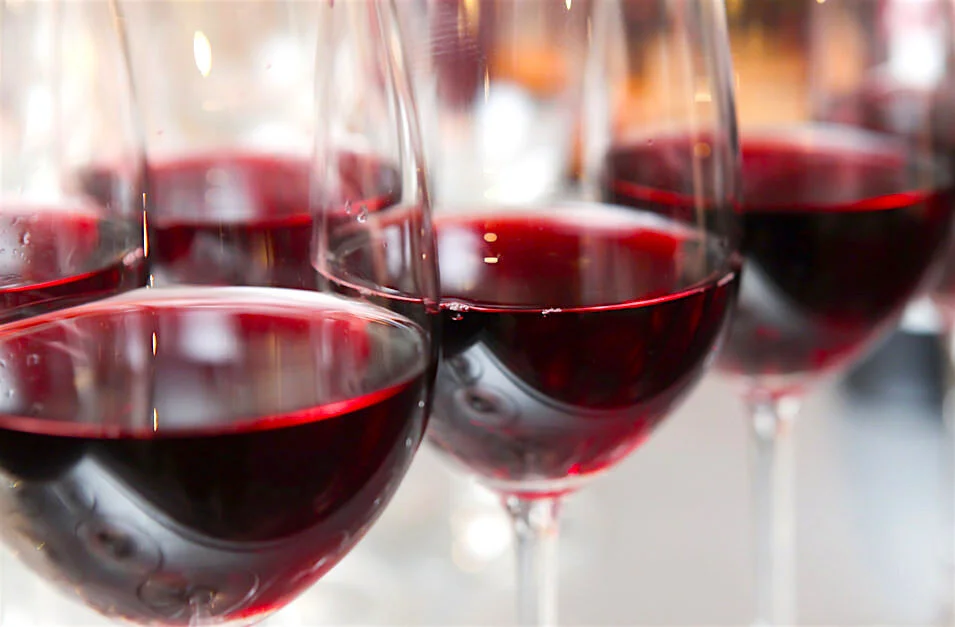
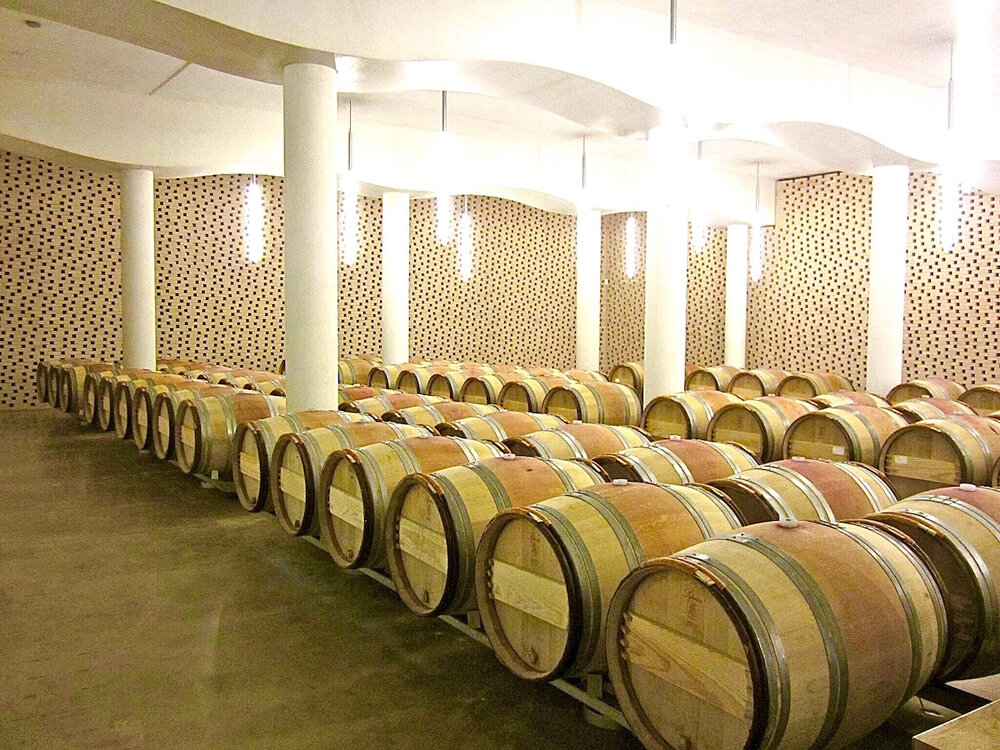
Before we dive in, I wanted to debunk some commonly held misconceptions about red wine:
Only about 3-5% of ALL wine produced improves with age so do NOT think you have to wait for all red wines to "age" before you drink them. But how can you tell if a red wine is an age-worthy one? If the wine is sealed with a screwcap, and/or falls within the $25 and under price category, go ahead and drink away. Red wines intended for aging are usually $35 and over and are generally always sealed with a cork to allow oxygen transfer to occur.
Removing the cork of a wine from a wine bottle does NOT allow a red wine to “breathe” and will do nothing to help it "open up." The only way to do this is to decant the wine, a process in which the liquid is infused with oxygen by pouring it from the bottle into a decanting vessel such as a crystal wine decanter (recommended) or a flower vase. For more on the benefits of decanting and how it's performed, please scroll down to "Talking the Talk."
If you suffer from the dreaded Red Wine Headache (RWH), it is NOT the sulfites that's causing them! White wine has almost twice the sulfites of red wine and while there's still some debate as to which exact chemical causes them, you have a better chance of avoiding these headaches by opting for lighter-bodied, lower tannin red wines like Pinot Noir or Gamay which contain lower amounts of these chemical suspects.
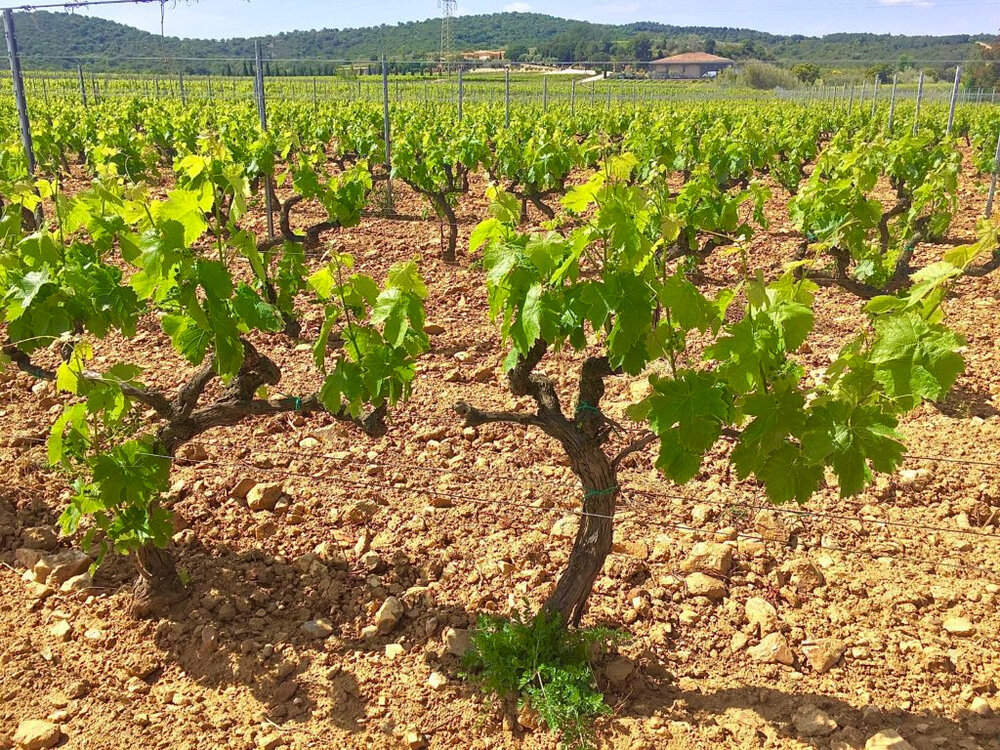
As I mentioned in White Wine 101, before we get into the differences between white wine and red wine, let's talk about what they have in common first, namely: fermentation! Please check out my previous post for more on this simple, yet critical chemical process. While white and red wines do have fermentation in common, red wine differs from white wine in a few important ways:
MACERATION: This is perhaps the major defining difference between white and red winemaking. In white winemaking there's essentially no contact between the grape juice and the skins, a process called maceration. However in red wine production, maceration is the manner by which important phenolic compounds are infused into the wine through contact with grape skins, stems and seeds. These compounds which include tannins and anthocyanins are responsible for a red wine’s color, flavor profile and mouthfeel. The duration of maceration is determined by the winemaker depending on the style of wine he is trying to make.
GRAPE VARIETIES: Since the color of red wine is largely determined by the color of the grapes used to make it, red wine is generally made using only red grape varieties. The more intense the color of the grape, the more intense the flavor and color of the finished wine. White wine on the other hand, is made from white grapes, and while it is possible to make white wine from red grapes, this process is usually only reserved for sparkling wine production. For more on that, please check out this post.
WARMER FERMENTATION: Unlike white wines which undergo cooler, temperature-controlled fermentations which run around 50-60 degrees, red wine fermentation run much warmer at approximately 60-95 degrees. The warmer temperature facilitates the extraction of color, tannin and other beneficial phenolic compounds which are important in the finished red wine.
MALOLACTIC FERMENTATION: While we hear about this secondary fermentation being used in the production of buttery Chardonnays, it is actually crucial to the production of most red wines as well. During this process, lactic bacteria converts harsh, bitter, malic acid into creamy, buttery lactic acid which makes the wine more palatable and imparts a richer, creamier mouthfeel. So the next time you pop the cork (or screwcap) off a bottle of Australian Shiraz and smell buttered popcorn, now you'll know why!

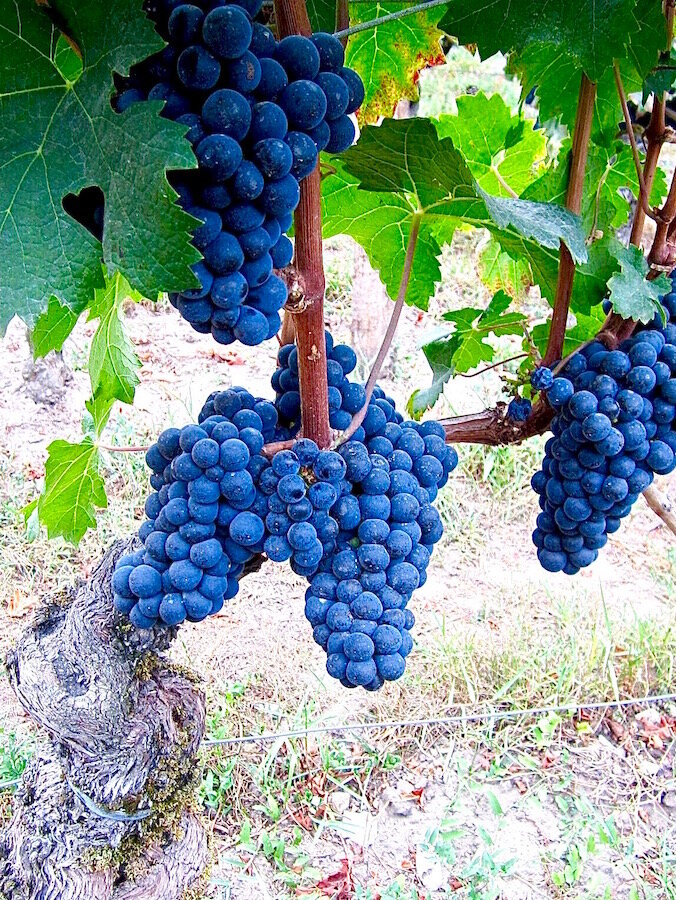
Stylistically speaking, red wines can range from light and fruity to full-bodied and tannic. This largely depends on the grape variety used to make the wine, as well as where the grapes were grown. Below are the top 5 red “cornerstone” grape varieties you're most likely to encounter on restaurant wine lists as well as in your local retail or grocery store. I’ve included information about each grape’s hallmark flavor profile, which foods you should pair them with and a few of my favorite bottles to try. And always remember, if you can’t find the exact wines listed, be sure to ask someone at your local wine shop to suggest a similar alternative:
1.) PINOT NOIR (Burgundy, California, Oregon): This delightful, yet difficult to grow grape variety produces lighter-bodied red wines that are velvety and delicious with notes of cherries, raspberries, earth and spice. It is the legendary grape of France's famed Burgundy wine region, but it also does well in California and Oregon as well. Since Pinot Noir is infamously finicky and a challenge to produce, this is one grape variety where you might want to spend a little more money to get a good bottle. If you’re in the mood to splurge, Pinot’s the place to do it:
PAIR WITH: Pinot Noir is one of the most versatile food pairing grapes on the planet. This is largely due to it's fruity flavor profile, lighter body and friendly, supple tannins. For that reason it pairs brilliantly with dishes ranging from grilled fish to a Burgundian classic like Coq au Vin. It also pairs nicely with difficult to match veggies like Brussels sprouts, beets and broccoli rabe.
GG FAVE PINOT NOIRS (please click on name of wine for purchasing information):
2.) MERLOT (Bordeaux, California, Italy): Since falling from grace in 2004 as a result of Mile's “Merlot-phobia” in the movie "Sideways," I'm happy to report Merlot has officially made a comeback! And why shouldn't it? Merlot is SO easy to love with its lush, plush notes of dark, ripe fruit and uber-alluring tannins. And while it originated in Bordeaux, France where it is still the most widely planted grape today, Merlot performs well in many exciting wine making regions around the world. So if you prefer bold red wines with oodles and fruit and firm, yet supple tannins, it's time to give Merlot another try!
PAIR WITH: Merlot is a lush, full-bodied red wine with lots of ripe fruit which make it perfect for pairing with savory, flavorful fare like burgers and BBQ as well as more refined dishes like seared duck breast with blackberry gastrique and roast leg of lamb.
GG FAVORITE MERLOTS:
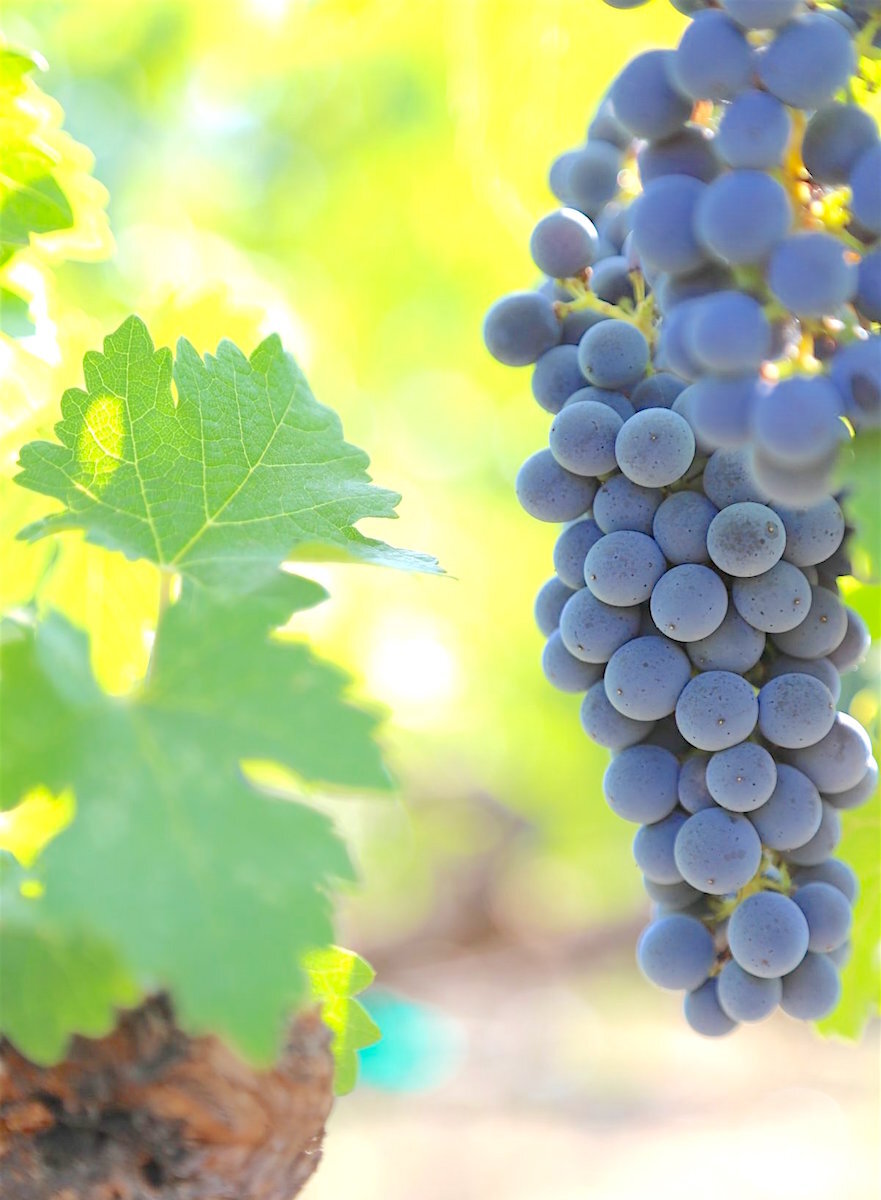
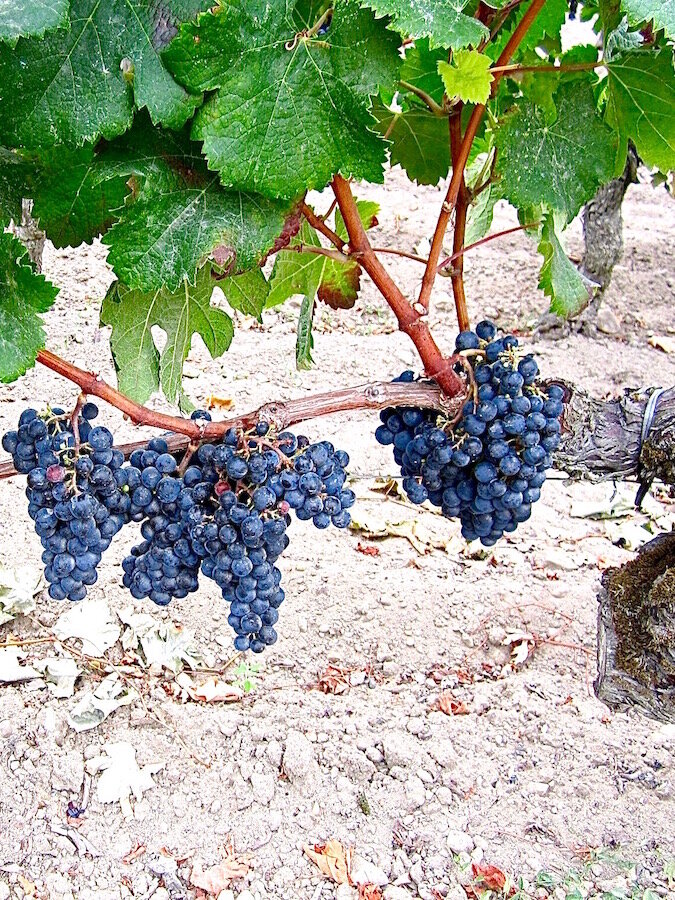
3.) CABERNET SAUVIGNON (Bordeaux, California, Italy): This legendary grape is the basis of many of the most expensive and age-worthy red wines on the planet - most notably in the Bordeaux region of France and California's Napa Valley. This is largely due to its reliably high levels of tannin which contribute greatly to a wine's overall structure and ageability. That being said, wines made from the Cabernet Sauvignon grape are available at many price points and the resulting wines display flavors ranging from tart red currants and graphite to rich blackberry, plum and cocoa depending on where it is grown. So for those of you who adore big red wines with intense tannins, Cabernet Sauvignon is the grape for you!
PAIR WITH: Cabernet Sauvignon is best matched with dishes that are equally as hefty as the wine itself - anything lighter would simply get blown away by its sheer power. Opt for dishes which are relatively high in fat and flavor such as a juicy, flavorful New York strip steaks, braised beef short ribs or savory grilled lamb chops.
GG FAVORITE CABERNET SAUVIGNONS:
Round Pond Kith & Kin Cabernet Sauvignon, Napa Valley, California ($38)
La Jota Howell Mountain Cabernet Sauvignon, Napa Valley, California ($99)
4.) SYRAH (Rhone, California, Washington): This intense red grape is the source of some of the most robust, deeply colored, full-bodied red wines on the planet. While is can be found as a varietal wine, Syrah is usually blended with other grapes (both red AND white!) to round out its spicy, exotic flavor profile. In cooler climates such as France's Rhone Valley, Syrah produces bold, complex wines with notes of black and red fruit accompanied by savory notes of herbs, bacon fat and olive tapenade. In warmer climates like Australia and South Africa where it is know as "Shiraz," Syrah produces lush, sometimes jammy wines with notes of cherry, blackberry and chocolate with a spicy, peppery finish.
PAIR WITH: Full-bodied Syrahs are perfect for pairing with luscious, flavorful dishes such as BBQ, burgers, braised beef dishes, juicy steaks and savory roasted leg of lamb.
GG FAVE SYRAHS:
5.) CABERNET FRANC (California, Bordeaux, Australia): Cabernet Franc, along with Sauvignon Blanc, is a parent of the Cabernet Sauvignon grape and while it might not be quite as popular, it is certainly worth exploring! While it can be found as a varietal wine in places like France's Loire Valley and California's North Coast, Cab Franc is usually a part of a blend, most notably in Southwest France where it is one of the five classic Bordeaux grape varieties. Here it is most popular on the famed Right Bank where it is usually blended with Merlot, most notably in Saint Emilion at the legendary Chateau Cheval Blanc. Cab Franc can display very different aromas and flavors depending on the climate in which it is grown. Cool climate Cab Franc displays notes of tart cherry, sweet herbs and mushroom accompanied by a delightful earthiness, while in warmer climates it reveals the grape's capacity for red berry fruit such as cranberry, pomegranate and strawberry along with notes of moss, forest floor and black tea.
PAIR WITH: This medium-bodied red pairs nicely with a wide variety of dishes such as Roast Chicken with Mushrooms, Provençal inspired Pork Chops, grilled Filet Mignon and hearty soups and stews.
GG FAVORITE CABERNET FRANCS:
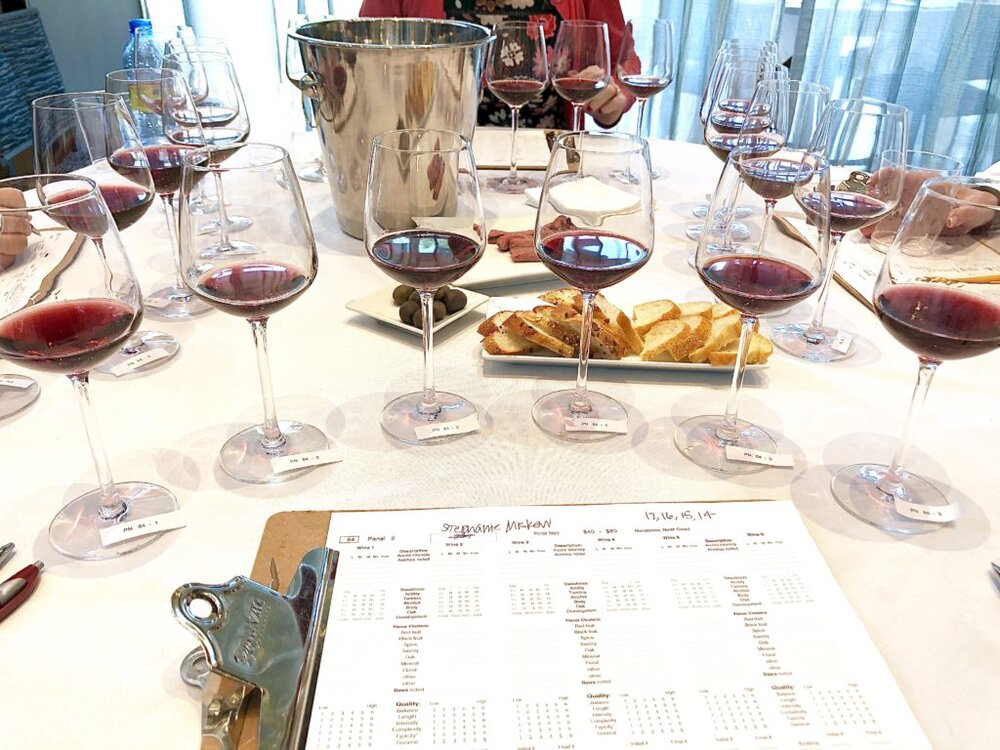
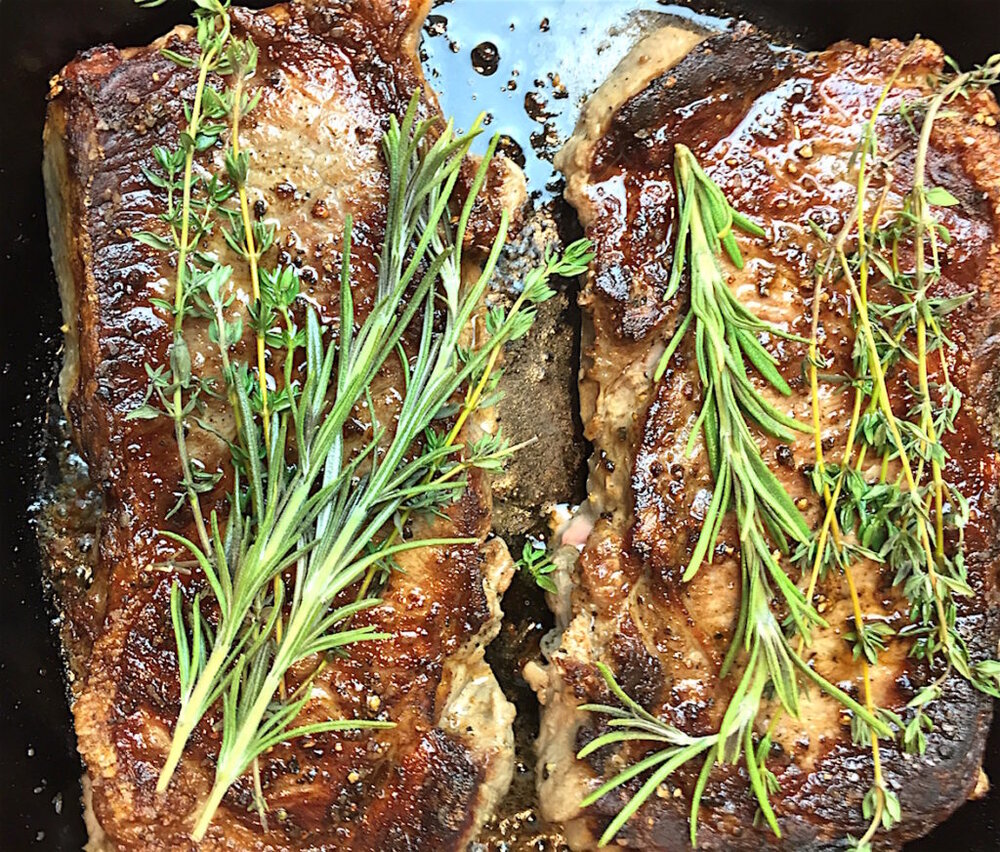
As with any type of wine, red wine has it’s own “lingo.” These terms refer to different winemaking tools or specific vinicultural techniques employed by winemakers when making this type of wine. No Red Wine 101 post would be complete without a list of those you’re most likely to encounter when talking about red wine:
TANNINS: These phenolic compounds set red wine apart from white wine and are imparted into red wine from its grape seeds, skins and stems as well as time spent in oak barrels. Tannins allow red wine to age with grace because they act as a preservative. They also add critical texture and mouthfeel to red wine, so when you feel the sensation of the moisture being sucked out of your mouth or a chalky feeling on your tongue after tasting a red wine, that’s the tannins!
SEDIMENT: As red wines age, their tannins tend to bind up with color molecules and precipitate out of solution and collect at the bottom of the bottle. Sediment is the layer of small, sand-like particles you encounter in these aged red wines. Generally, the more tannic the wine, the more sediment you’re likely to encounter. While sediment won’t hurt you if you drink it, the texture can be off-putting so it is often advisable to decant wine off of its sediment before drinking it, although in very old wines, always taste the wine first! While all young, tannic red wines can handle the sudden infusion of oxygen that occurs during decanting, old wines tend to be more fragile.
DECANT: Decanting is the process of transferring a wine from the bottle into a crystal decanter and there are two main reasons to do this: (1) decanting a youthful, tannic red wine infuses it with oxygen thereby softening its harsh tannins and making its aromas and flavors more readily perceptible. A super creative option popularized by Nathan Myhrvold in his books Modernist Cuisine utilizes a blender to "hyperdecant" young red wines - for my video demonstration of this process, please click here or click play on the video above, and (2) as red wines age, sediment often forms at the bottom of the bottle. These older red wines often need to be decanted off of their sediment for maximum enjoyment. While decanting a youthful red wine should be done vigorously, decanting an older red wine is a more delicate process. You don't want to risk over oxygenating the wine or stirring up the sediment.
OAK: The majority of red wines receive some degree of oak treatment during which the wine actually spends time in an oak barrel. While there are quite a few different types of oak, the most popular are French and American. French oak is used with the majority of red grapes such as Pinot Noir, Cabernet Sauvignon, Merlot and Cabernet Franc. It imparts notes of baking spices (i.e. clove, nutmeg) and vanilla to a finished wine. American oak, on the other hand, has a special affinity for certain red grapes such as Tempranillo and Zinfandel and manifests in the finished wine as notes of dill pickle, coconut and sweet vanilla.
RESVERATROL: This natural phenolic compound found in red wine is believed to have heart-healthy properties which help prevent damage to blood vessels, reduce bad (LDL) cholesterol and prevent blood clots although it’s not entirely understood how this works. Resveratrol is also found naturally in peanuts and berries which aren’t nearly as much fun and you can now find it in skincare products such as the Caudalie line as well!
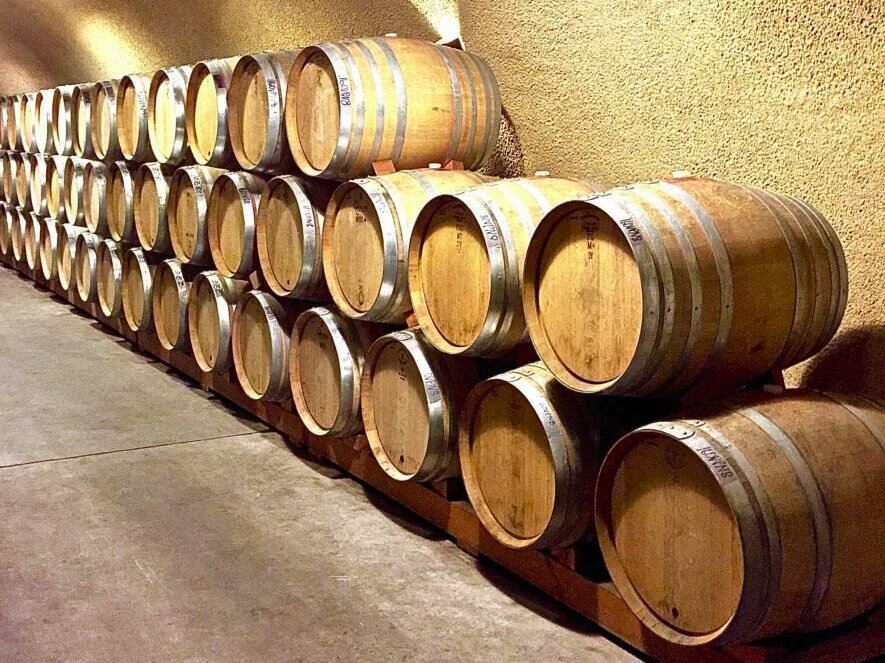
I hope you found my post on Red Wine 101 helpful in your understanding of this delightful, and imminently enjoyable wine. For even more on the topic, please check out my podcast episode, Red Wine 101, where I answer some interesting viewer questions and dish on some humorous personal experiences as well. If you missed my previous post, White Wine 101, please click here to get all caught up and check out some of my favorite Winter White Wine Recommendations as well!
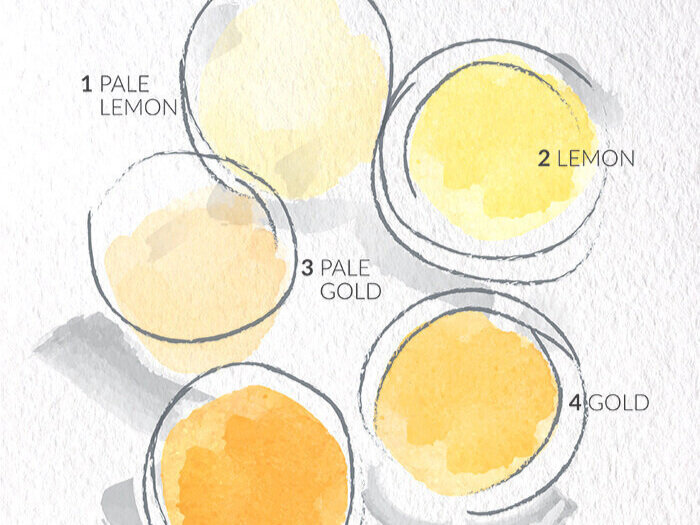
If one of your #PandemicResolutions is to learn more about wine, I'm here to satisfy your vinous cravings with the perfect place to start: my Wine 101 blog series. Because, let's face it, wine can be a pretty confusing topic! It distills diverse subjects such as history, science, geography and anthropology into one delicious, liquid commodity. And while you don't have to worry about learning EVERYTHING, knowing the basics can certainly help you navigate this expansive topic.
As a long time student of wine, I gotta say, White Wine 101 is a fabulous place to start. Unfortunately, there's a nasty rumor out there that white wine shouldn't be taken as seriously as red wine and I couldn't be happier to kick that theory to the curb and tell you that’s flat out W R O N G! White wines represent some of the most expensive, elegant and age-worthy wines on the planet. Not to mention, they're also really delicious to drink.
But if you need a little more convincing, scroll down for a few important reasons why you should wholeheartedly embrace the world of white wine!
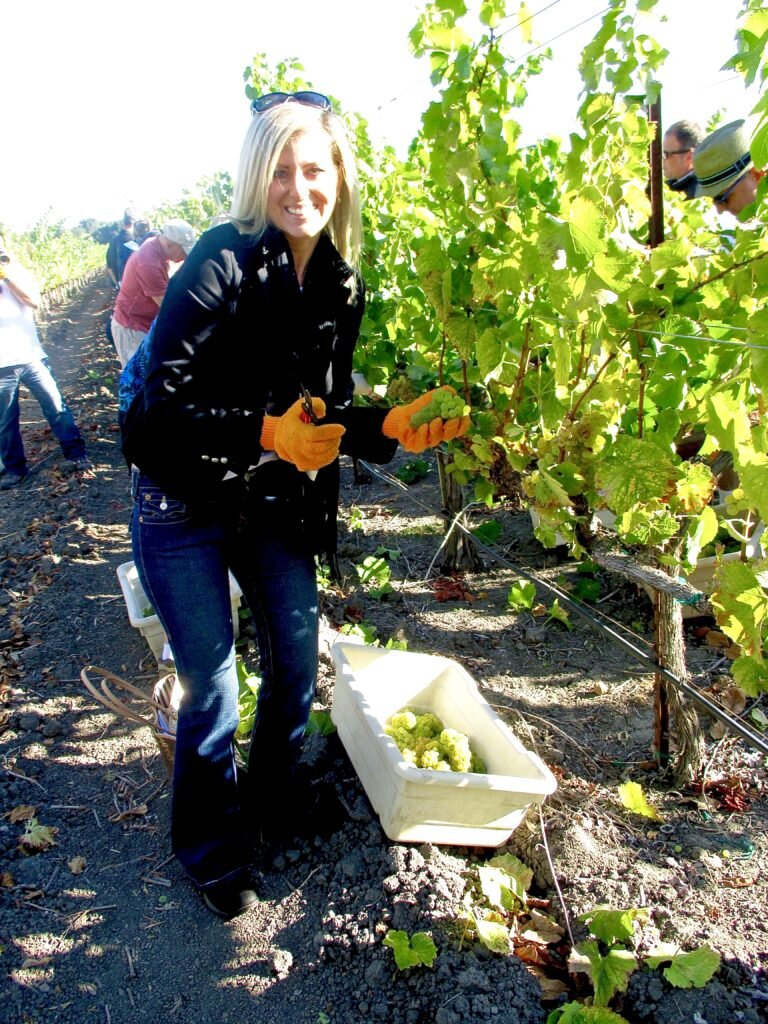
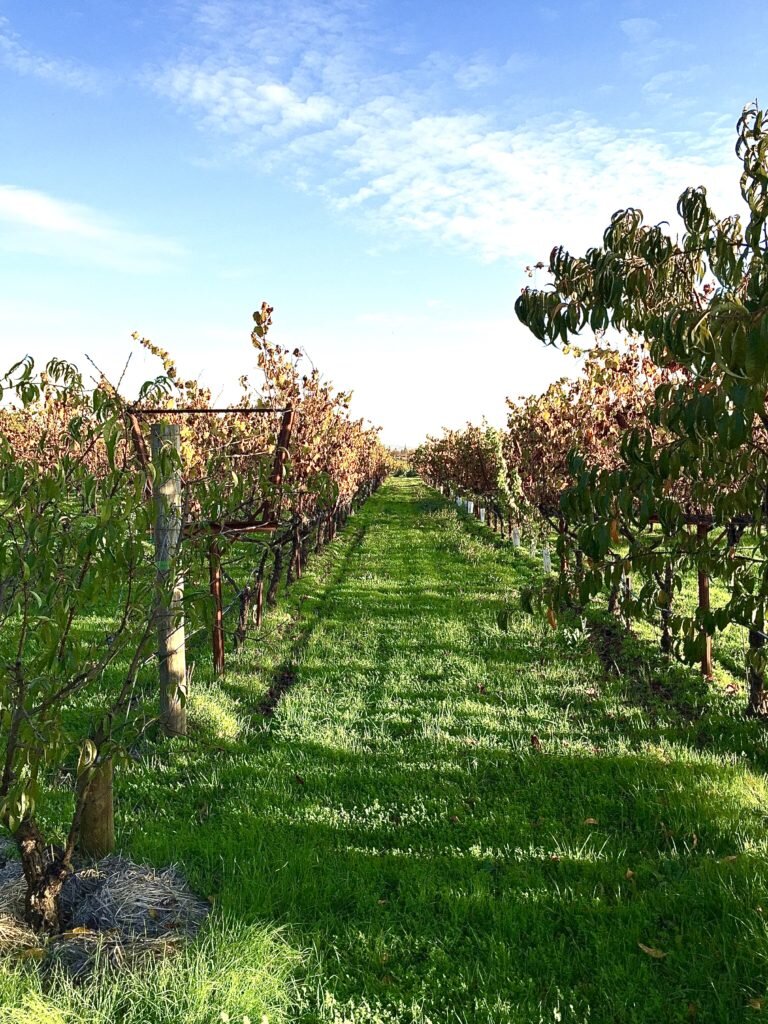
White wines are much more versatile when pairing with food, there's no harsh tannins to compete or clash with the flavors on your plate.
You're less likely to get a hangover when drinking white wine due to the lower levels of alcohol.
Most white wines are meant to be consumed while young, so no waiting for the wine to age or dealing with harsh tannins. Simply pop the cork (or twist the screwcap) and you're good to go!
Before we delve into the differences of white and red wine, let's talk about the one thing ALL wines have in common: fermentation! Every type of wine on the planet, whether it's sparkling, white, red, pink, blue or fortified, had to undergo fermentation. During the fermentation process, yeast converts grape sugars into ethanol (alcohol!) and carbon dioxide. Once the alcohol level gets high enough, the yeast cells die and voila - you have wine! When making still wines, the carbon dioxide is allowed to dissipate, but it sure comes in handy when making sparkling wine.
More on that later.
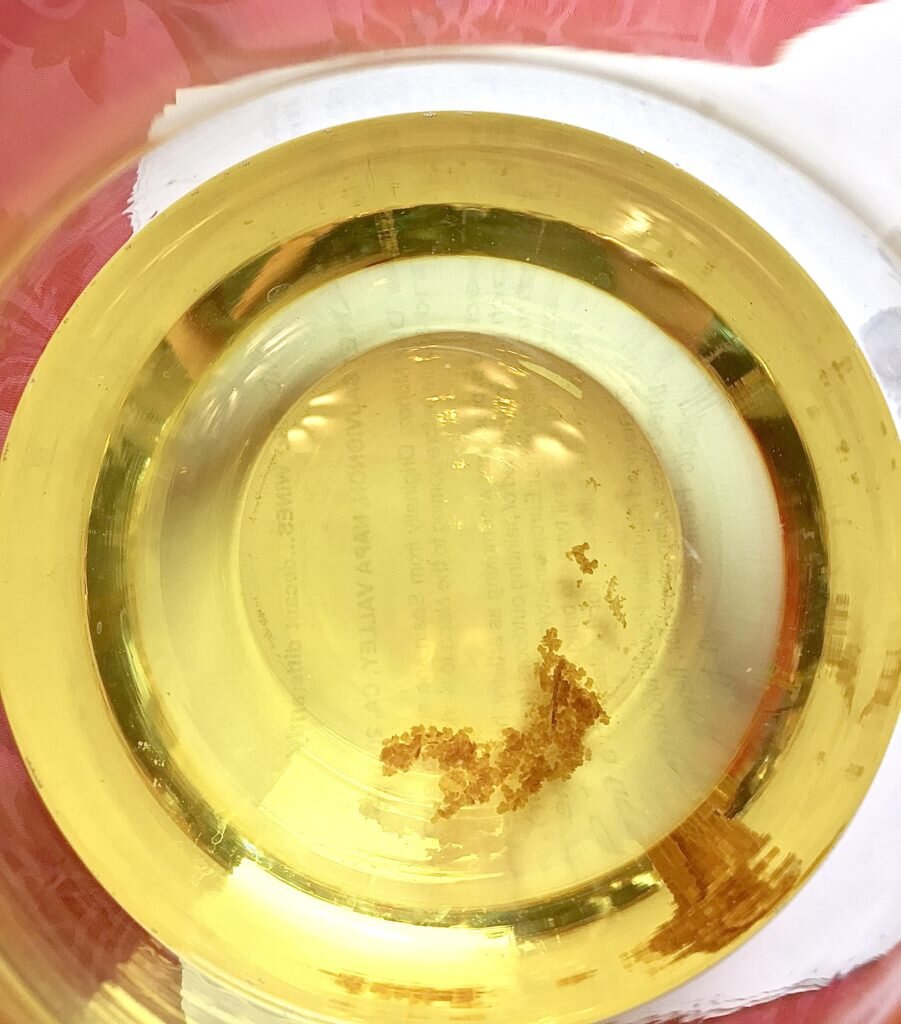
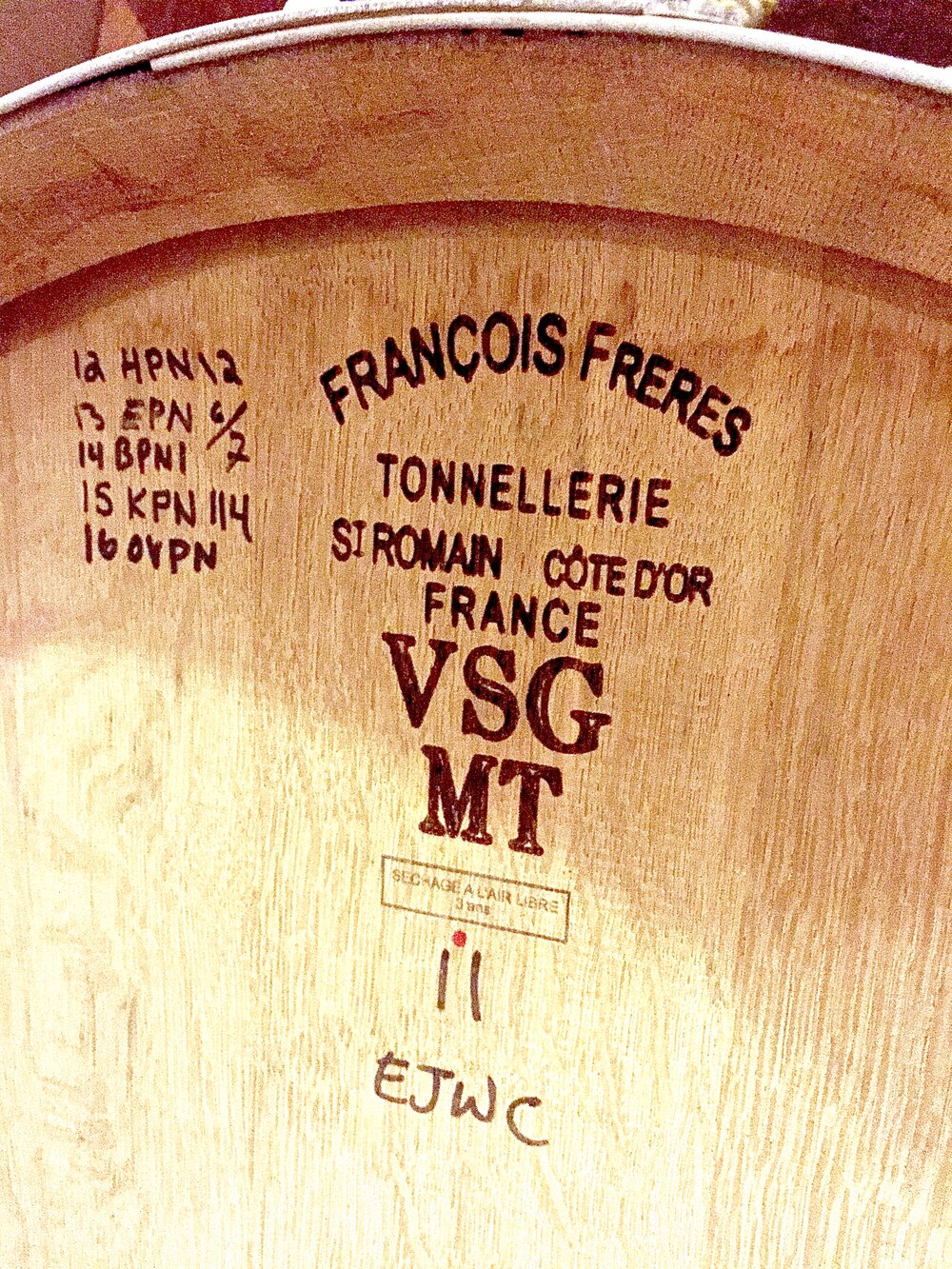
Now that we've talked about the one thing all wines have in common, let's talk differences. White wine production differs from the production of red wine in a few important ways:
SKIN CONTACT: White wines are fermented without their skins. Unlike red wines which get their color from contact with grape skins, white wines are gloriously translucent so the juice is pressed right off the skins to prevent any transfer of color or other errant phenolic compounds.
SULPHUR (aka SO2): The addition of sulfur plays a much bigger role in white wine production than red. In fact there are about twice the level of sulfites in white wine as there are in red! Yep, you heard me correctly, so if you're someone who suffers from the dreaded Red Wine Headache, I'm here to tell you - it definitely ain't the sulfites! (Click here for more info) The science behind it actually makes good sense, sulfur acts as a preservative for wine and prevents it from spoiling and turning brown. Red wines have built in preservatives in the form of tannins so they don't need the added protection from sulfur like white wines do.
COOL FERMENTATION: In order to preserve white wine's crisp, fruity flavors it it fermented at a much cooler temperature than red wine. 45-60 degrees is the sweet spot for white wine fermentation, while 70-85 degrees works best for reds.
COLD STABILIZATION: Tartaric acid is the primary acid we find in wine which is essential to its mouthfeel and taste. When wine is subjected to very cold temperatures, especially as it ages, the acid can precipitate out of solution and form harmless crystals, aka wine diamonds, at the bottom of the bottle. To prevent this from occurring, many winemakers cold stabilize their wines by subjecting them to cold temperatures for a period of time and then filtering the crystals out before the wine is bottled. Some winemakers feel this process can strip flavors from their wine so they do it sparingly which can result in crystals forming in their wine if it gets very cold.
As far as style goes, white wines can range from light-bodied and fruity to full-bodied and oaky. This largely depends on the grape variety, wine region and the way the wine is made.
When it comes to grapes, there are a few varieties you're most likely to encounter at your local retail store. Here is my White Wine 101 list of the top 5 grapes to look out for as well as what they taste like, what foods you should pair them with, and a few of my own personal favorites. Remember, if you can't find the exact wine listed here, be sure to ask your local wine shop to suggest a similar alternative:
1.) PINOT GRIGIO/PINOT GRIS (Italy, Oregon, Alsace): Pinot Grigio thrives in Northeastern Italy, specifically Friuli and Alto Adige, where it produces light-bodied, refreshingly fruity wines that are imminently quaffable, if a tad forgettable when mass produced. Pinot Gris, the same grape grown in different geographic regions including Alsace and the Northwest US, is know for having more flavor, viscosity and overall personality.
PAIR WITH: While this wine is perfect served as an aperitif, it also pairs nicely with lighter fare such as grilled fish (Pinot Gris in particular is perfect with salmon), lighter pasta dishes and roasted chicken breast.
GG FAVE PINOT GRIGIO/GRIS:
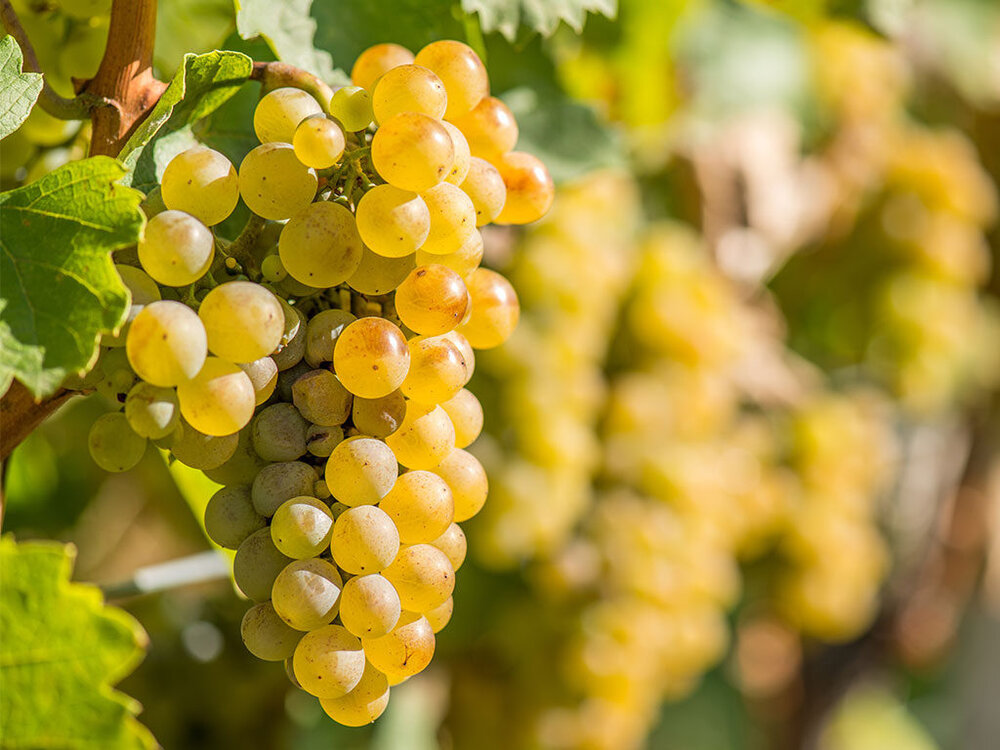
2.) RIESLING (Germany, Alsace, Washington, New York State): This grape produces fruity, aromatic wines with a lively acidity and delightful fruit profile which displays citrus, green apple, pear and jasmine tinged usually to some degree with it's hallmark petrol note. Riesling can also run the gamut stylistically, ranging from bone dry to super sweet.
PAIR WITH: Sweet Riesling is a natural match for spicy Asian food such as Thai dishes and sushi. Dry Riesling is a wonderful pairing for vegetable-driven dishes, Tex-Mex cuisine and lighter seafood fare.
GG FAVE RIESLINGS:
3.) SAUVIGNON BLANC (New Zealand, California, Loire Valley): This charismatic white grape creates wines which are famously crisp and refreshing with a zesty acidity and lively fruit flavors ranging from grassy and grapefruity in New Zealand to peachy and citrusy in California. France's Loire Valley imparts limestone and mineral components to these wines as well as the infamous yet desirable, "pipi de chat."
PAIR WITH: Sauvignon Blanc is a fabulous food wine that pairs brilliantly with cheeses such as tangy chevre and shellfish like oysters, clams and shrimp. It can also play nicely with lighter fare such as pasta with white sauce, chicken and even pork, it's truly a food lover's white wine.
GG FAVE SAUVIGNON BLANCS:
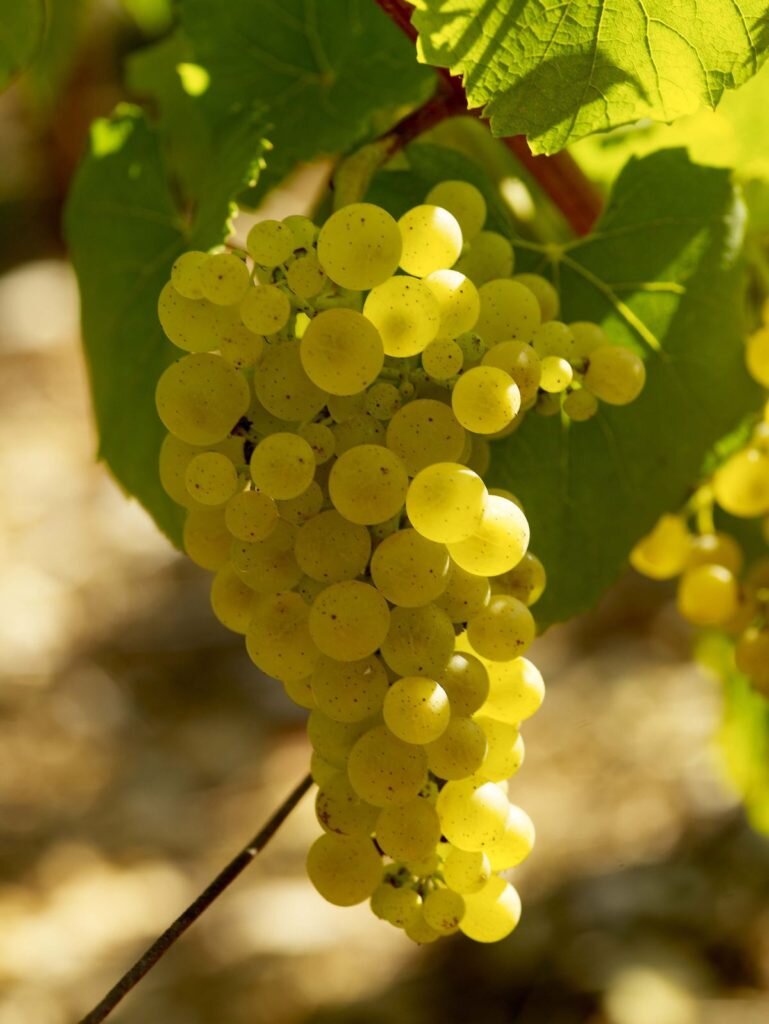
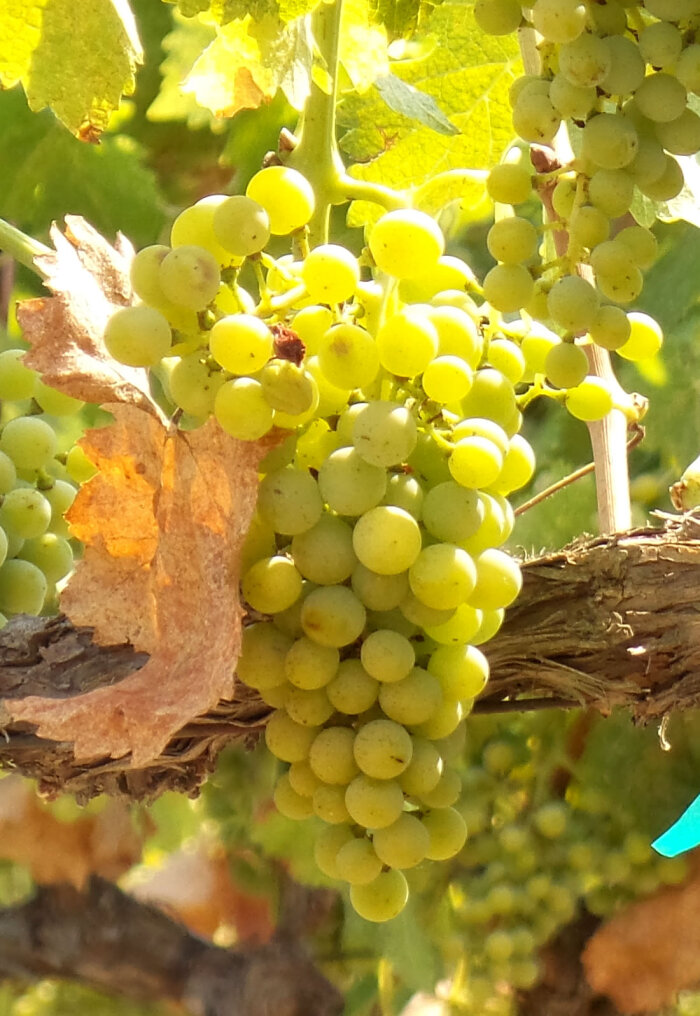
4.) CHARDONNAY (US, Chile, Burgundy, Champagne): The most popular and widely planted white wine grape produces some of the most beautiful, expensive and age worthy white wines in the world. Chardonnay is also know for expressing its "terroir,"meaning it reflects the specific region it was grown in. As a result its can display a variety of flavors and textures ranging from flinty notes of green apple, melon, citrus and limestone in cooler climates and ripe, full-bodied peach, pineapple and mango tinged with vanilla and spice in warmer climates.
PAIR WITH: Unoaked incarnations of Chardonnay are perfect for pairing with lighter dishes such as seafood, salads and chicken dishes. Oaked Chardonnay can be a bit tricky to pair with food, but generally pairs nicely with more decadent dishes including Roasted Chicken and Mushrooms and Lobster Mac and Cheese.
GG FAVE CHARDONNAYS:
Maison Joseph Drouhin Vaudon Chablis, Burgundy, France ($22)
Hartford Court Russian River Valley Chardonnay, Sonoma, California ($26)
5.) VIOGNIER (Rhone Valley, California, Australia): The Viognier grape produces full-bodied white wines that are utterly delicious! In cool climates like the Rhone, aromas and flavors of citrus and stone fruit are accompanied by gorgeous notes of white flowers and minerals. In warmer climates, like California and Australia, lush notes of tropical fruit like pineapple, mango and apricot are brought to the fore.
PAIR WITH: Decadent cheeses such as a triple creme Brie or Saint Angel, rich seafood dishes such as succulent seared scallops and roast chicken with apricots.
GG FAVE VIOGNIERS:
Chateau de Saint Cosme Condrieu, Rhone, France ($55)
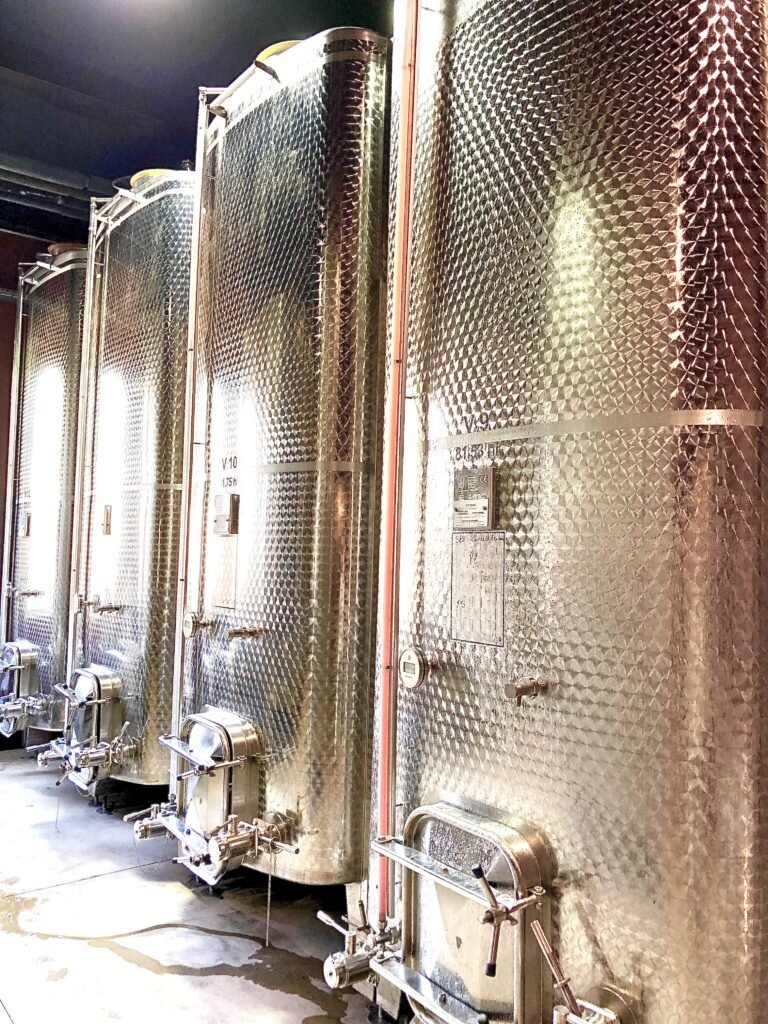
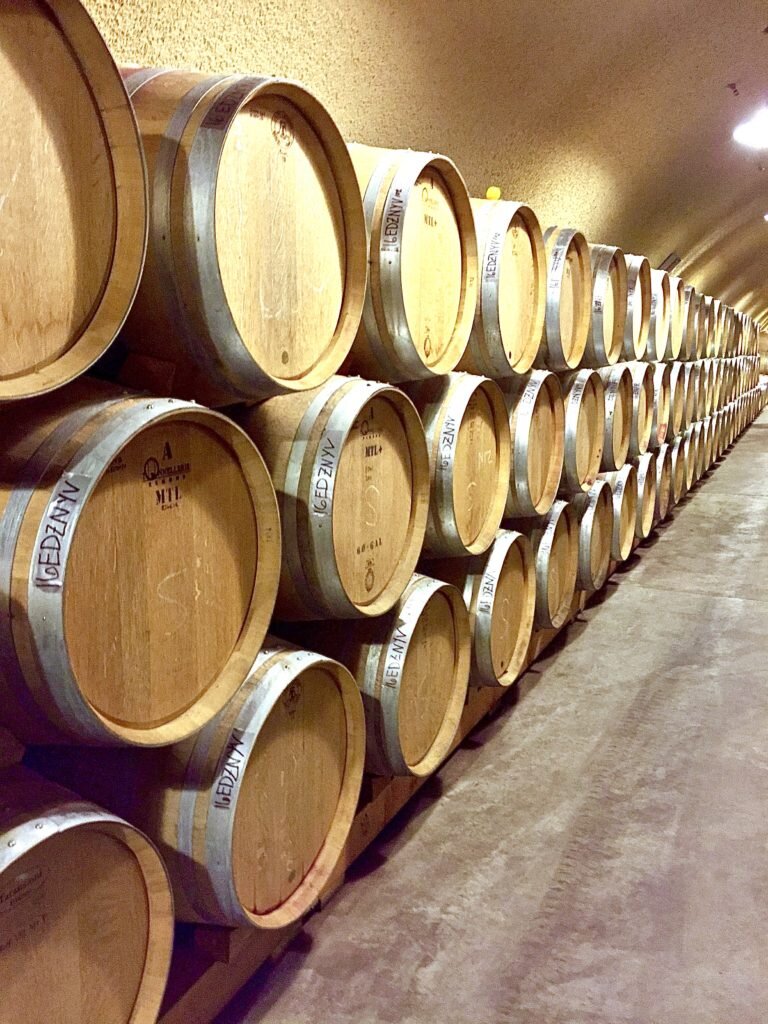
As with any type of wine, white wine has it's own "lingo." These terms can refer to different winemaking tools or specific techniques employed by winemakers. No White Wine 101 post would be complete without a list of those you're most likely to encounter when talking about white wine:
STAINLESS STEEL: Wines fermented in stainless steel tanks are crisp, fruity and refreshing. These wines are generally ideal for warmer Summer months and are usually wines meant to be consumed immediately, meaning they will not improve with age.
OAK: Some white wines, predominantly Chardonnay, are fermented in oak barrels. Oak (usually French) imparts added richness and flavor to the finished wine and also gives it a greater ability to age. In addition to fruit, oaked wines will also display notes of vanilla and baking spices (i.e. nutmeg, clove) which are transfered into the wine during it's contact with the toasted barrels.
MALOLACTIC FERMENTATION: White wines undergo this secondary fermentation when a winemaker wants to soften harsh malic acid, into creamy lactic acid. "Malo" occurs shortly after or concurrent with primary alcoholic fermentation when lactic bacteria are added which ultimately transform tart, green apple flavors into those of a buttery, baked apple. It is predominantly used with Chardonnay, resulting in a wine with a buttery, rounder, fuller mouthfeel.
SUR LIE/BATTONAGE: "Sur lie" or "on the lees" is when a wine remains in contact with the dead yeast cells after fermentation. These dead cells impart a richer mouthfeel, texture and flavor to the wine. Battonage refers to the stirring up of the yeast cells to maximize their contact with the wine.
I hope you found this post on White Wine 101 helpful to your understanding of this delightful, and sometimes underestimated, type of wine. For even more on the topic, check out my podcast episode, White Wine 101, where I answer some interesting viewer questions and dish on some humorous personal experiences as well. When you’ve sufficiently soaked up all of this information, please proceed to the next installment, Red Wine 101!
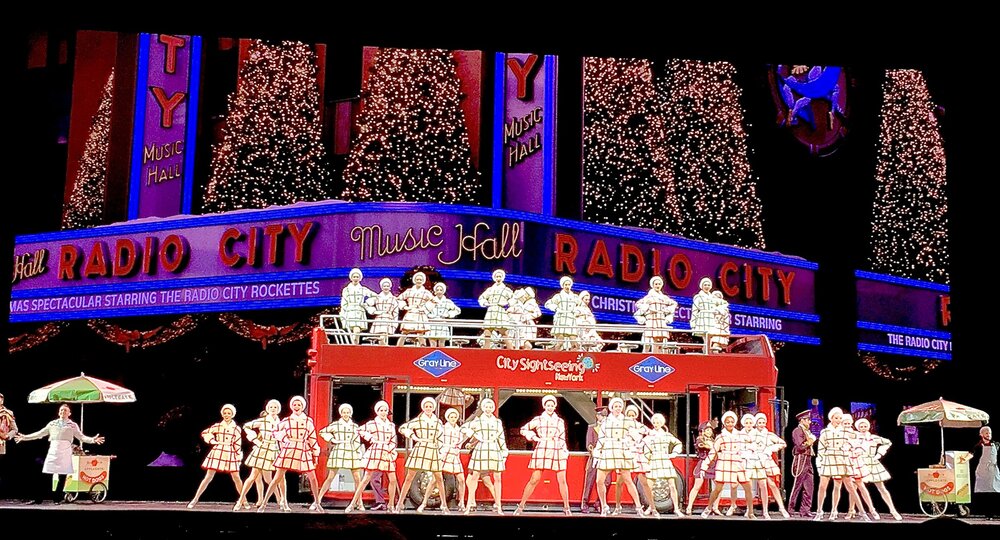
I recently asked my Facebook friends to name their favorite city to visit during the Christmas/Holiday season. Although many fabulous places around the globe were mentioned (Austria, London, Park City, etc) the most popular place hands down was New York City.
Like these folks, there's no place that puts me in the Christmas spirit quite like New York. The elaborately decorated store windows, the vibrant hustle and bustle, the iconic Rockefeller Center Christmas tree - every square inch of this city transforms into a veritable Winter Wonderland. As a native Floridian who spent a few years living in Manhattan, there's also a bit of nostalgia for me as well. So when we make our annual trip to New York in December, here's the 5 spots we're sure not to miss:
1.) Radio City Christmas Spectacular: Ever since I saw this show for the first time during my junior year of high school I've been hooked! Having danced for 13 years growing up, the Rockettes were the epitome of glamour and I was completely mesmerized by them.
Since it's first production in 1933 this show has been dazzling kids of all ages with its elaborate sets, festive music, and, of course, the Rockettes. From their signature "kickline" and "falling soldier" moves to the arrival of Santa, I defy anyone to sit through this production and not find themselves in the Christmas spirit. So whether you're on a girls trip with your BFFs, bringing the kids to NYC for the first time, or it's just you and your spouse make plans to go - you won't regret it!
**The GG Tip: After the show take a leisurely stroll across the street to Rockefeller Center and visit the beautiful tree - perhaps even take a spin around the ice rink?
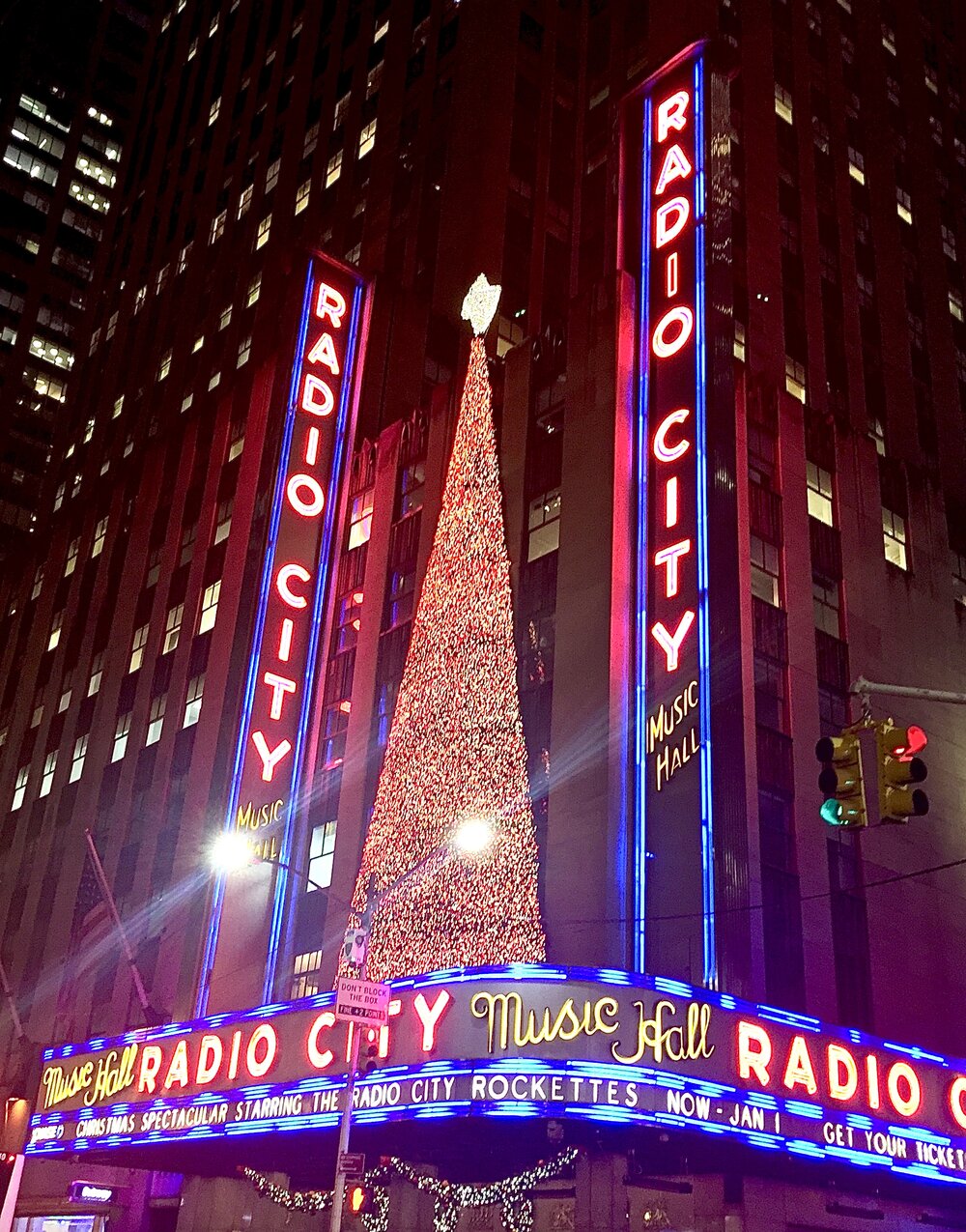
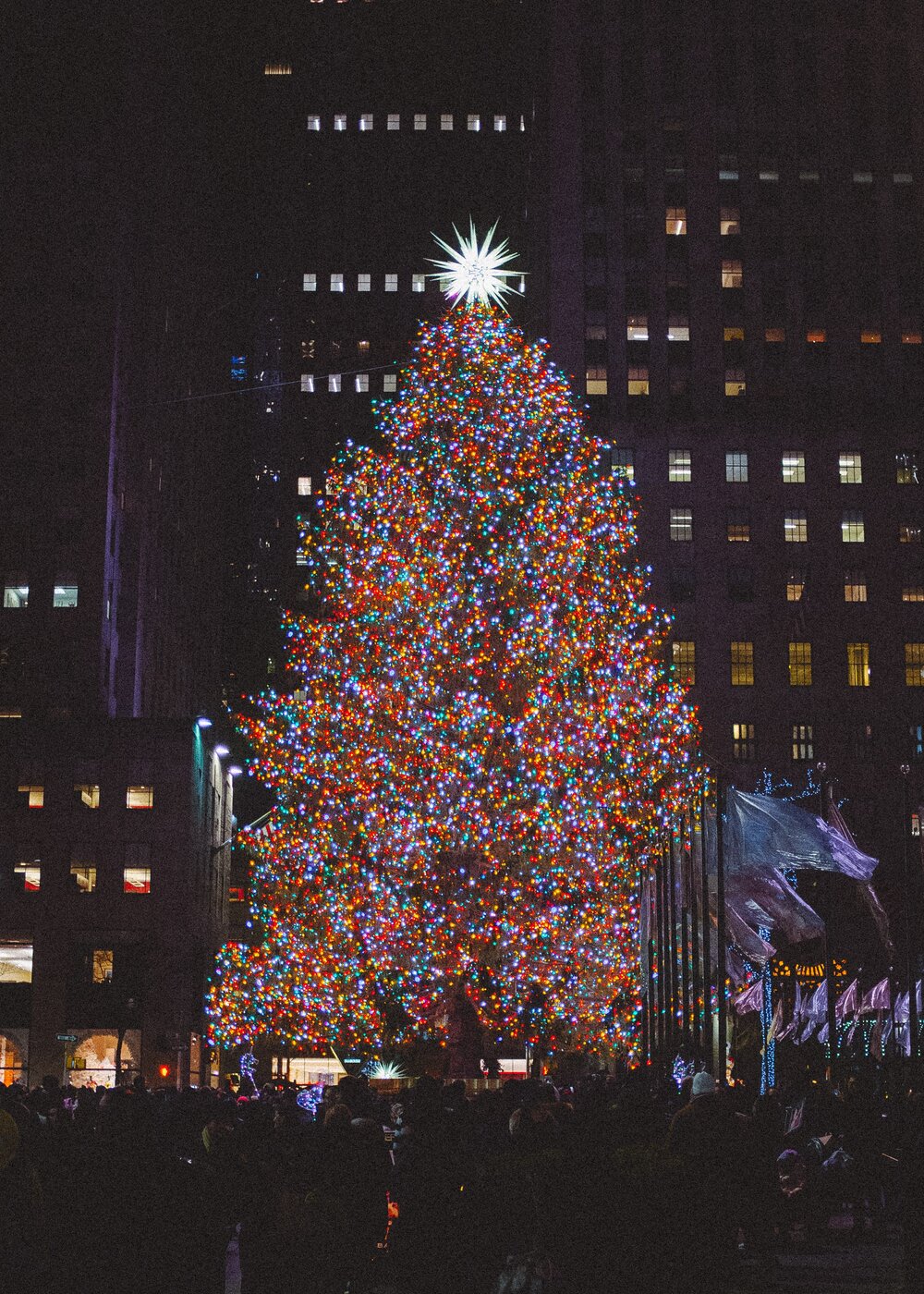
2.) The Plaza Hotel Champagne Bar: This iconic hotel opened its doors on October 1, 1907. No expense was spared in its construction and soon it was dubbed the greatest hotel in the world! Since then, it has appeared in classic films such as North by Northwest, Home Alone 2 and Sleepless in Seattle. The hotel also appeared in Sex and the City on more than one occasion: The Plaza's famous Oak Room was the site of Charlotte's first encounter with Trey's mother, Bunny MacDougal and Carrie recreated the scene from 1973's The Way We Were (which was also shot there) in front of the hotel after Big and Natasha's Engagement party.
The glamorous Champagne Bar overlooks Fifth Avenue and the Pulitzer Fountain and is the perfect spot to enjoy a glass of your favorite Champagne after taking in the store's festive holiday windows (see #5) or before heading to dinner. After soaking up all that glamour and Champagne, don't forget to get a photo in front of the beautiful Christmas tree in the lobby.
**The GG Tip: Afternoon Tea at The Plaza's legendary Palm Court is also a classic New York City experience if you're unable to visit the Champagne Bar!
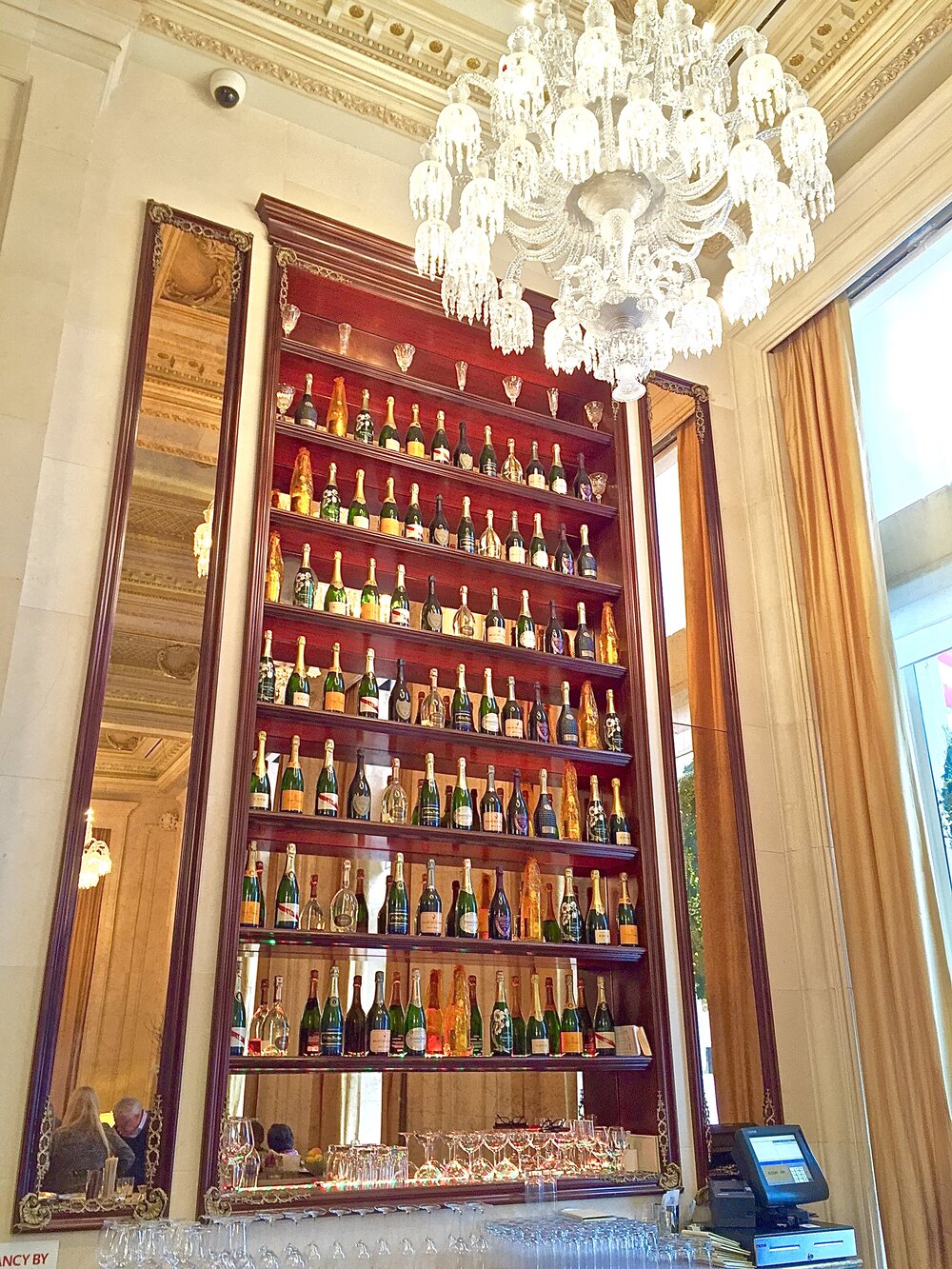
3.) '21' Club: Officially opened on January 1, 1930, '21' is one of America’s most famous speakeasies from the Prohibition Era. Designed with its own disappearing bar and a secret wine cellar to hide the illegal liquor from prying eyes, it’s a place where celebrities and captains of industry have wined and dined for more than 80 years (they even have their favorite tables - click here to view). Over the years, '21' has made cameo appearances in such well known TV shows and films as Sex and the City, Wall Street, and Breakfast at Tiffany's to name a few.
During the Christmas season, the restaurant is decorated to the nines and greets you with its historic jockeys and iron gate decked out in festive red bows and boughs of fir. Menu classics include the "Speakeasy" Steak Tartare, Steak Frites and Creamy Chicken Hash and for my fellow wine lovers, a tour of the cellar is a must! You'll get to see the hidden entrance, how they concealed the "secret cellar" during Prohibition, as well as bottles once stored for celebrities including Elizabeth Taylor, Frank Sinatra, Leroy Neiman, Eva Gabor, and Sammy Davis Jr.
**The GG Tip: Request a table in the legendary Bar Room and make plans to tour the wine cellar either in advance of your reservation or when you arrive.
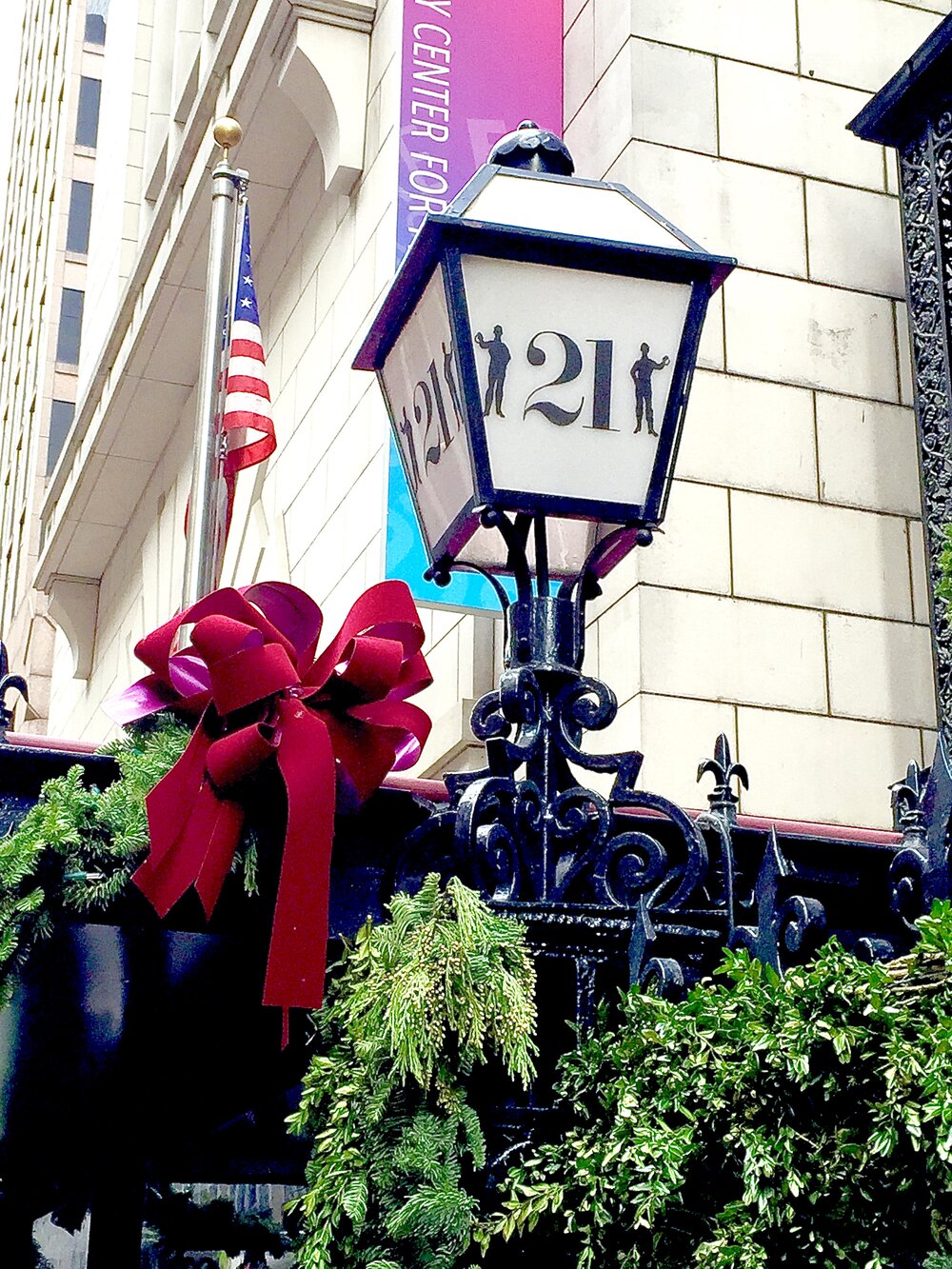
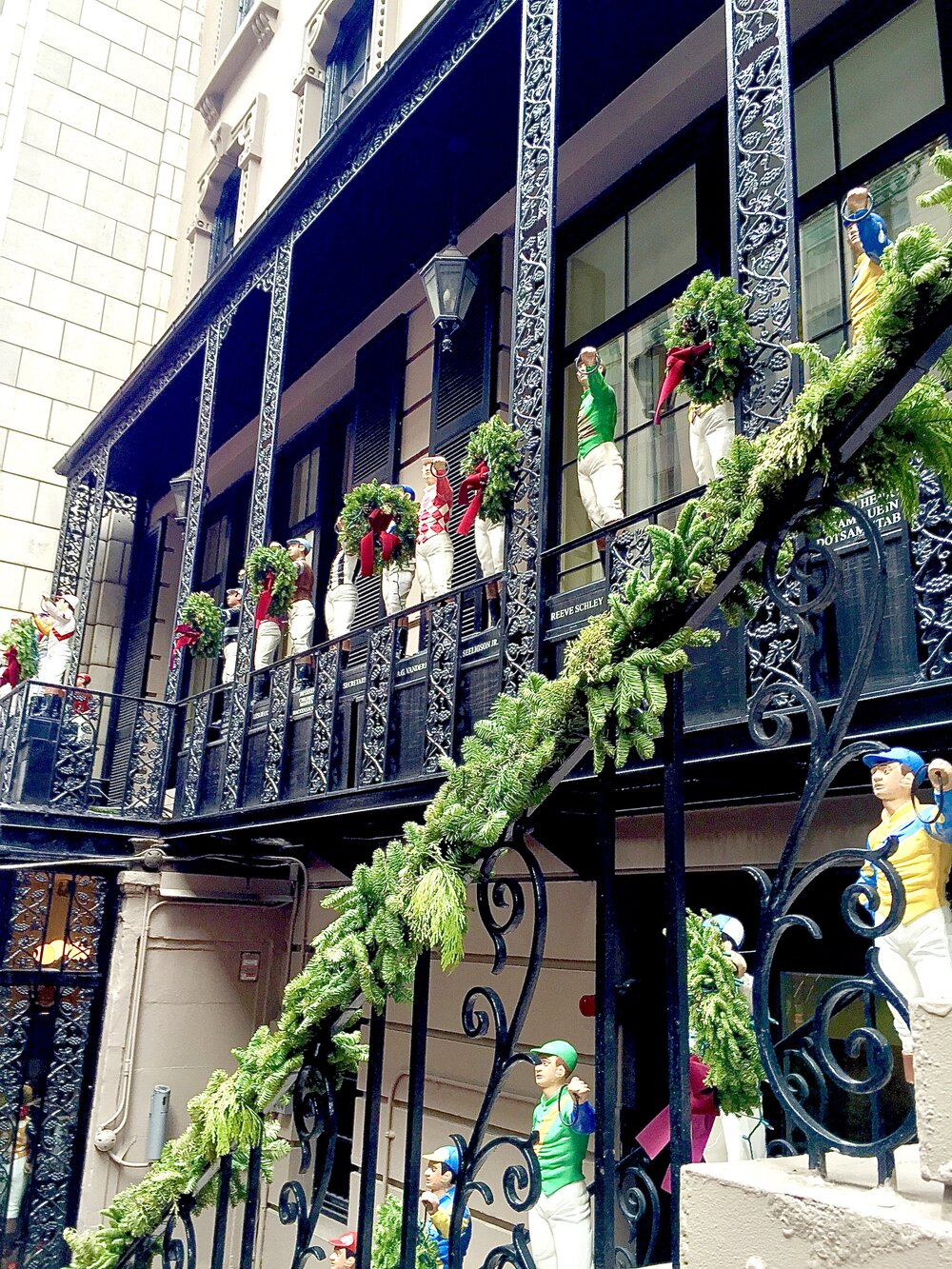
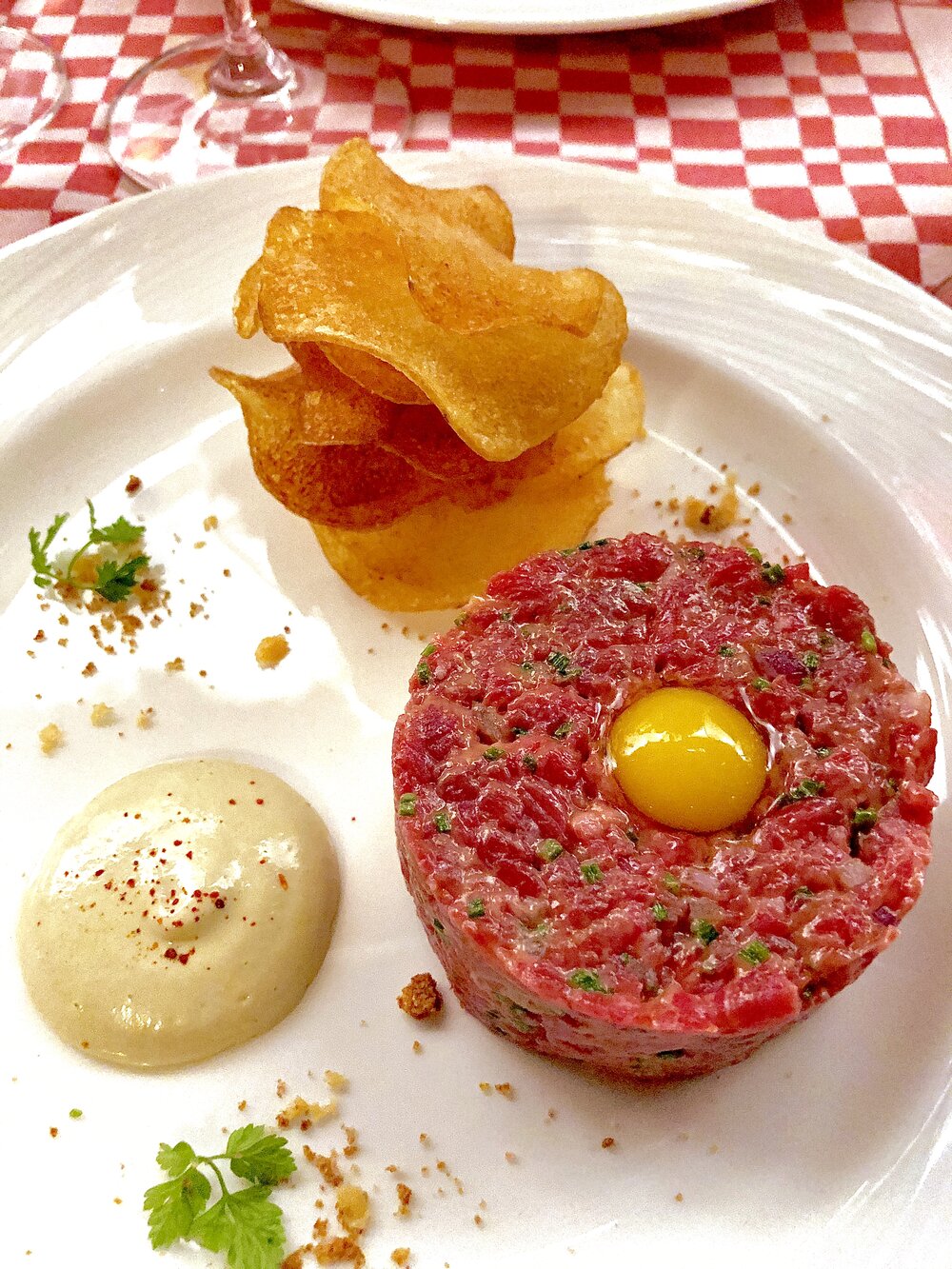
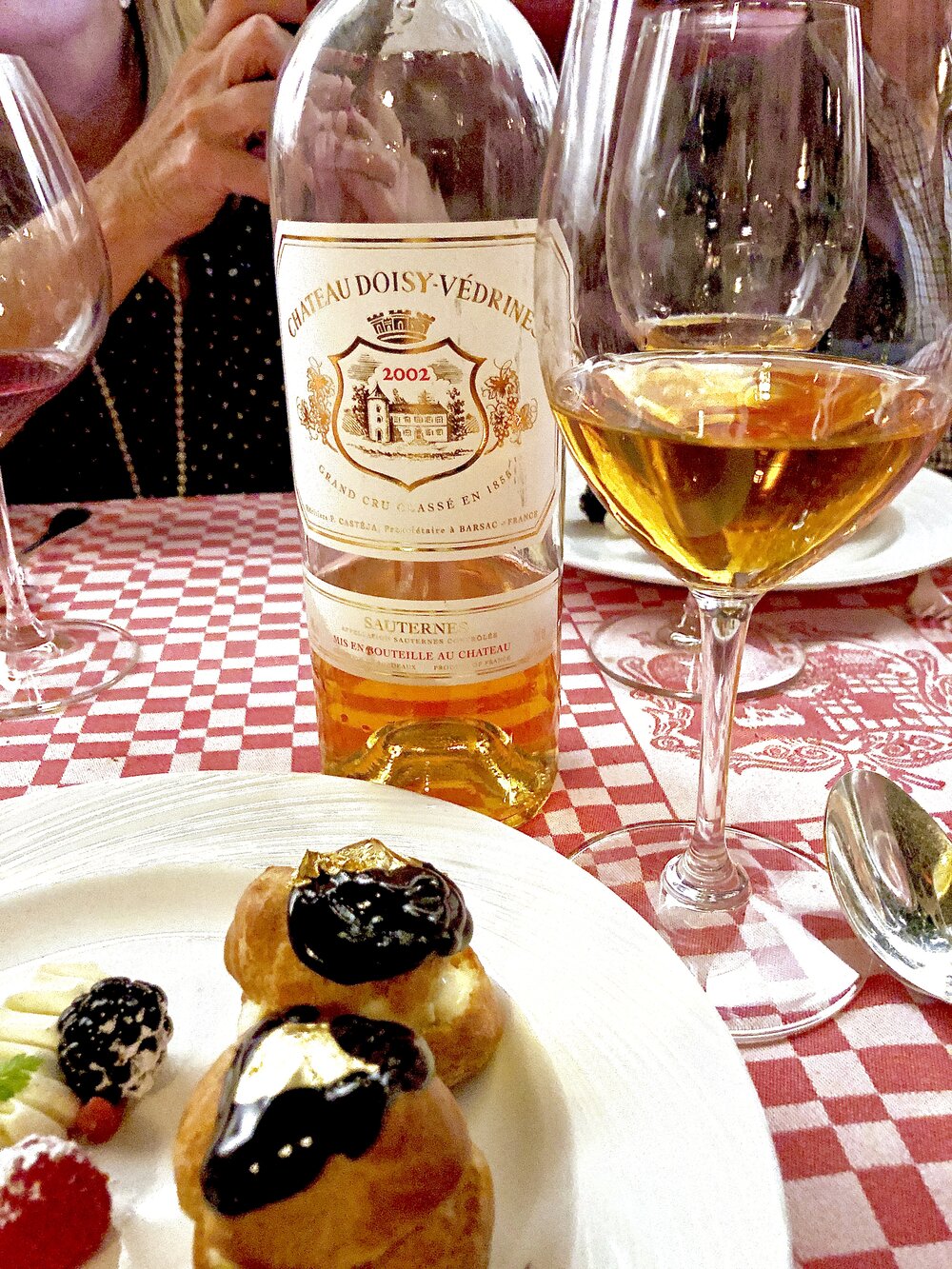
4.) Sunday Brunch at Balthazar: I've been in love with Keith McNally's French bistro-inspired eatery ever since I lived in Manhattan in the late 1990's. Located in SoHo on the corner of Spring and Crosby, Balthazar is still thriving to this day and for good reason. Since last year's departure of founding Chefs Riad Nasr and Lee Hanson, Shane McBride, who's been at Balthazar since 2010, has taken the helm in the kitchen and the cuisine continues to be phenomenal!
Sunday brunch has become a ritual for us on recent visits and it's the perfect way to start your day before wandering the cobblestone streets of SoHo. You also never know who you'll be elbow to elbow with at the bar, Celine Dion's manager? A certain well known movie director? Just be sure to do some people watching (ok, and eavesdropping) as you enjoy a glass of Champagne (or one of Cisco's delicious Bloody Mary's) with your mouth watering Steak Frites or Eggs Benedict.
**The GG Tip: If you haven't made reservations, head straight to the bar and give your name to Cisco the bartender. The wait at the bar is much shorter than the dining room and alot more fun!
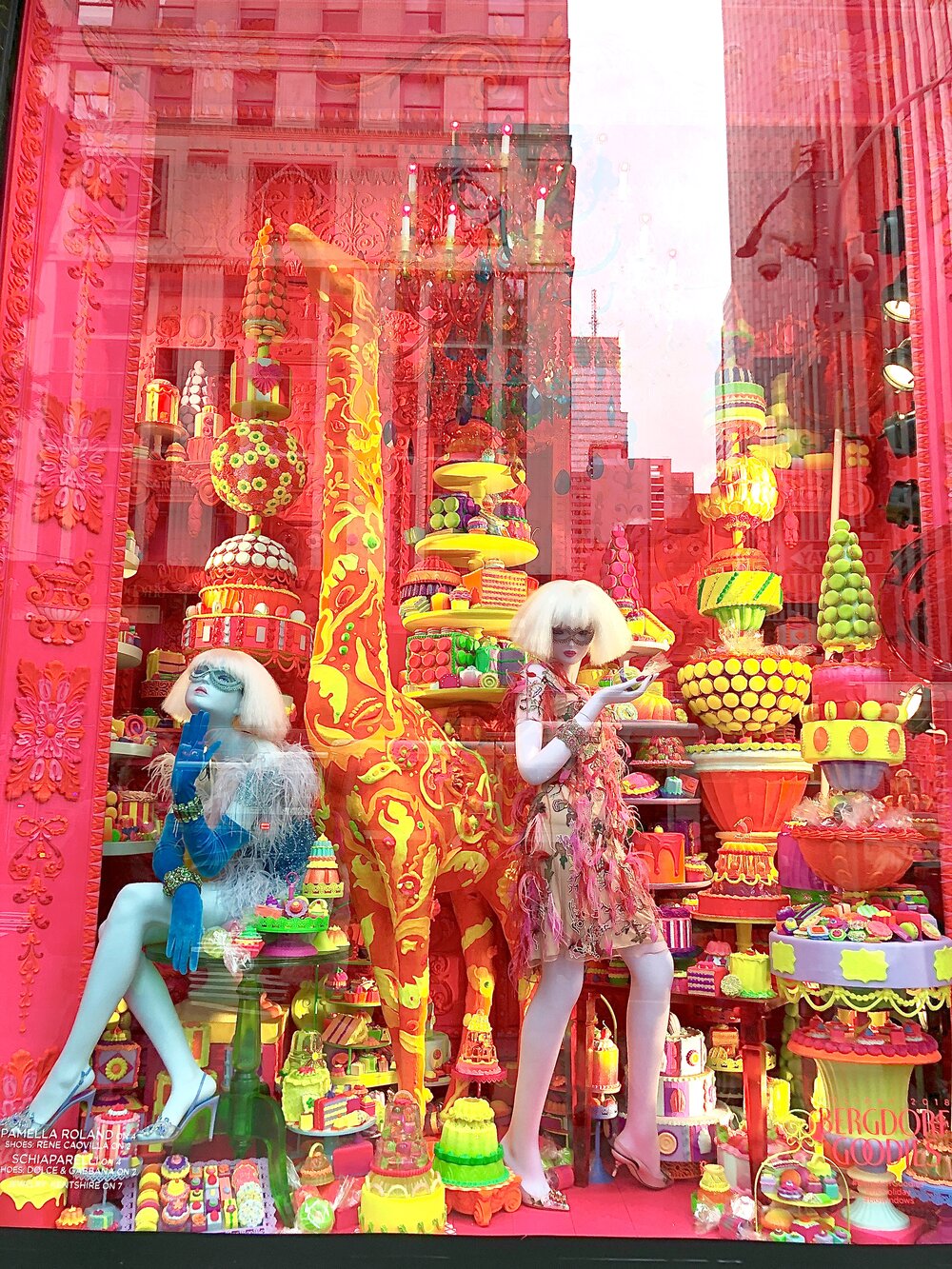
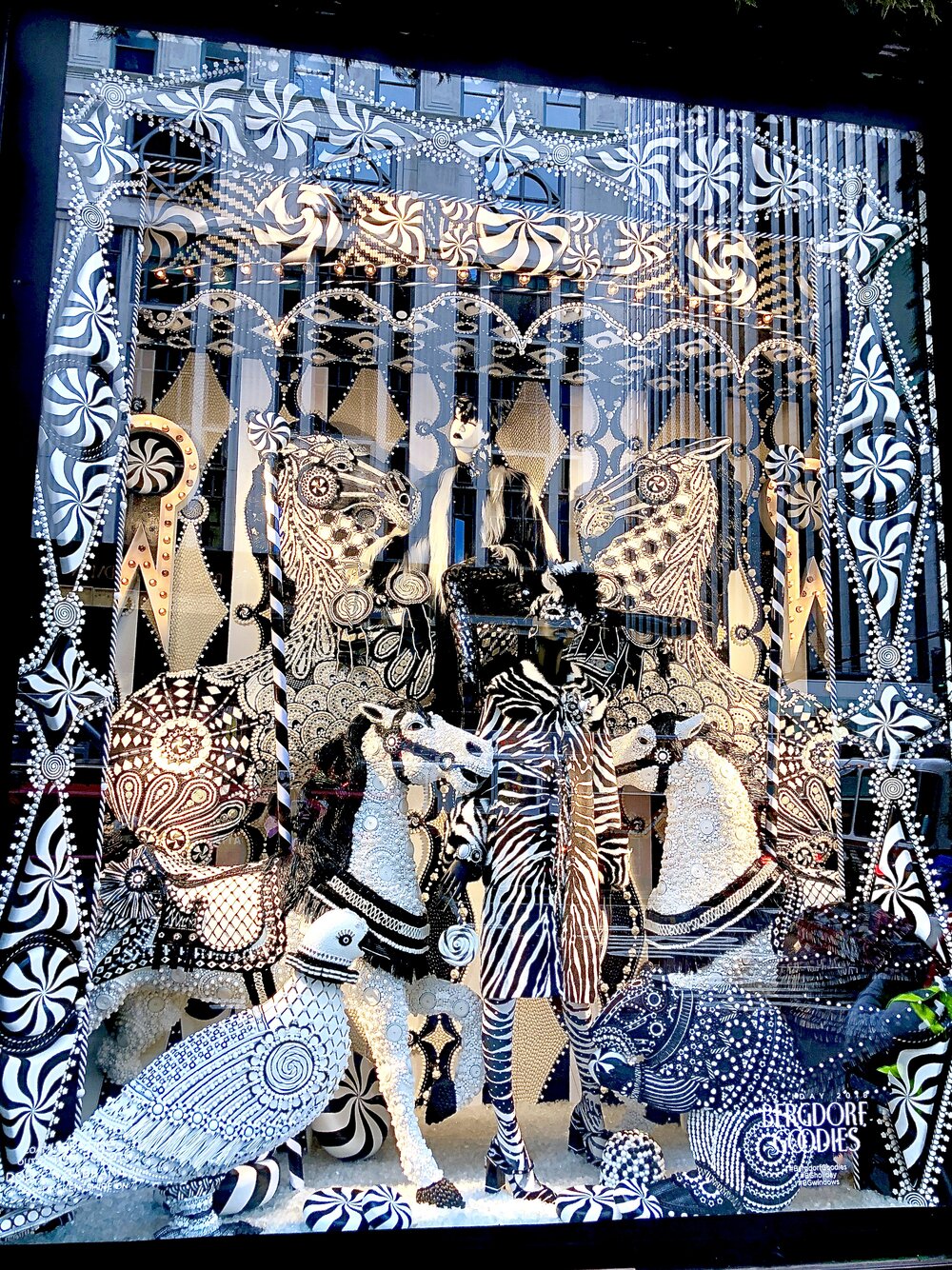
5.) Bergdorf Goodman's Christmas Windows: Of all the iconic store windows in New York City, Bergdorf's are my favorite! Located on the corner of 58th and 5th (right around the corner from The Plaza Hotel), this NYC institution (a subsidiary of Neiman Marcus - another favorite, to read more click here) always provides the most gratifying visual confections. Since it was founded in 1899 by Herman Bergdorf who soon collaborated with Edwin Goodman, this harbinger of glamour has built its reputation catering to the world's fashion elite.
The 2018 theme is "Bergdorf Goodies," and these windows are the culmination of an 11-month creative process representing 3,500 work hours and a team of 30 employees. In keeping with this year's culinary theme, each window features a different fantasy on holiday-inspired sweets. So from candy canes to gingerbread houses to antique chocolates and other assorted confections, each window is a mouthwatering feast for the eyes and a must for all foodies!
**The GG Tip: If you really want to immerse yourself in the Bergdorf Experience, enjoy lunch and a glass of Champagne at BG Restaurant located on the 7th floor of the store (reservations recommended).

If you happen to visit any of these suggestions, be sure to tag me using #TheGlamorousGourmet. And did I leave anything out? Where are your favorite place to visit in New York City this time of year?